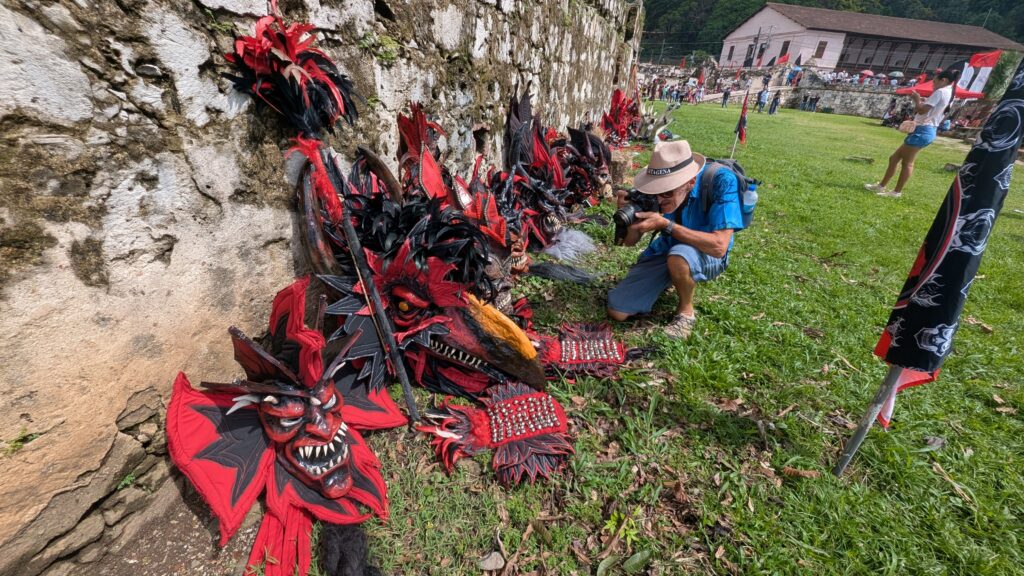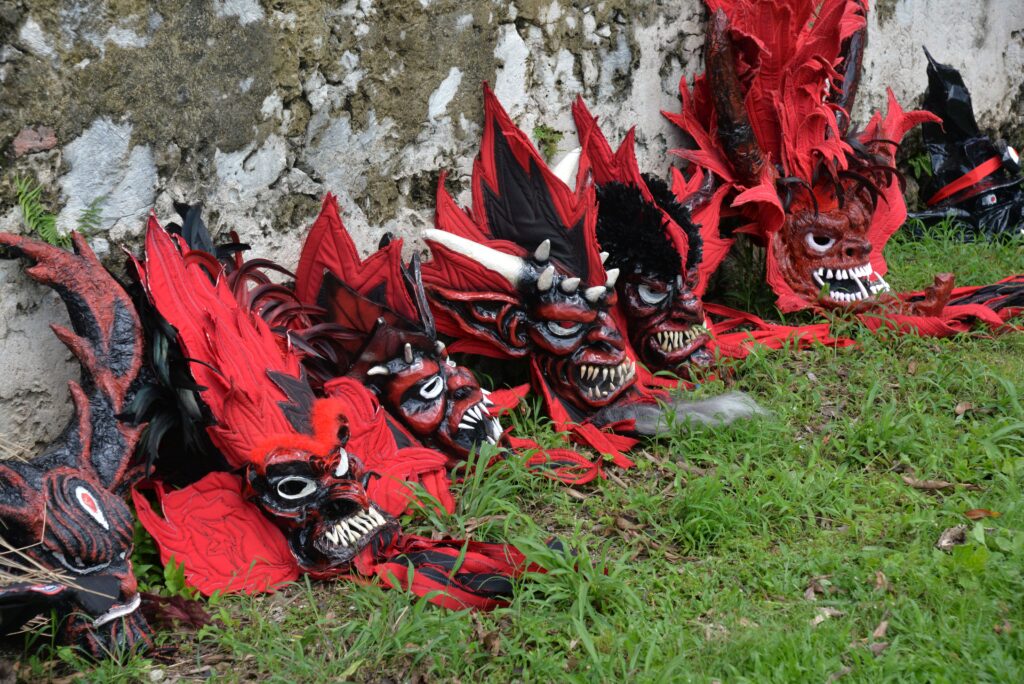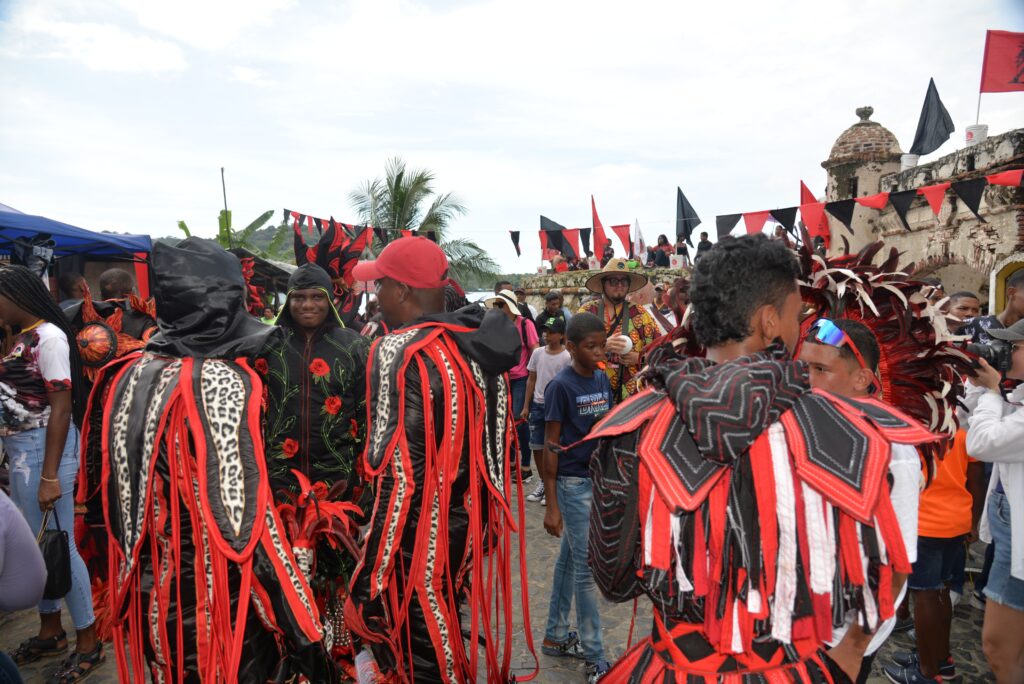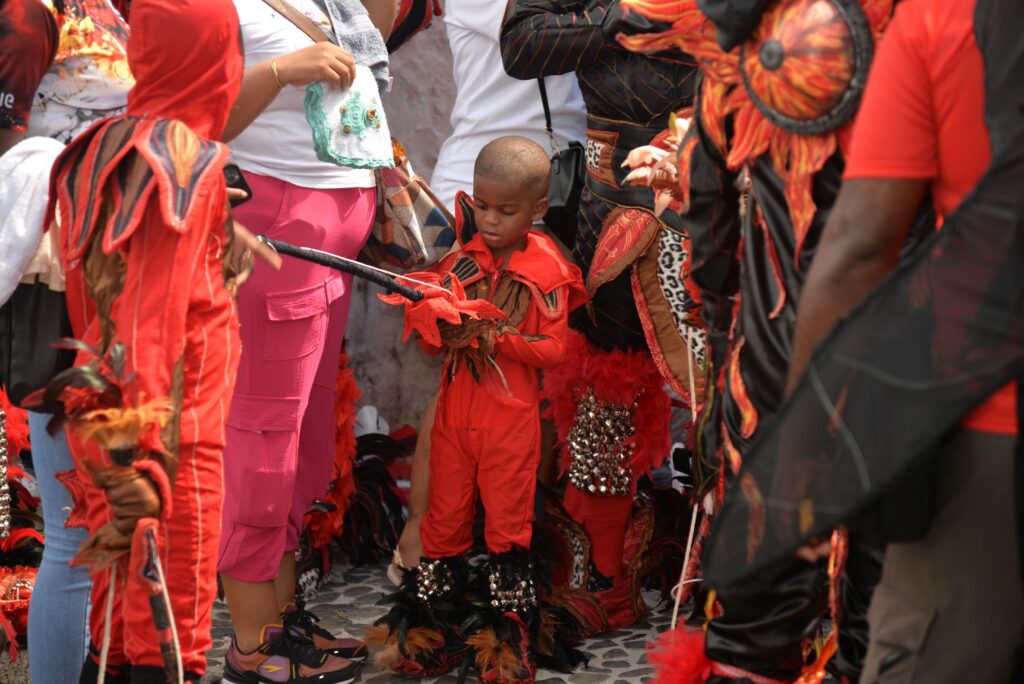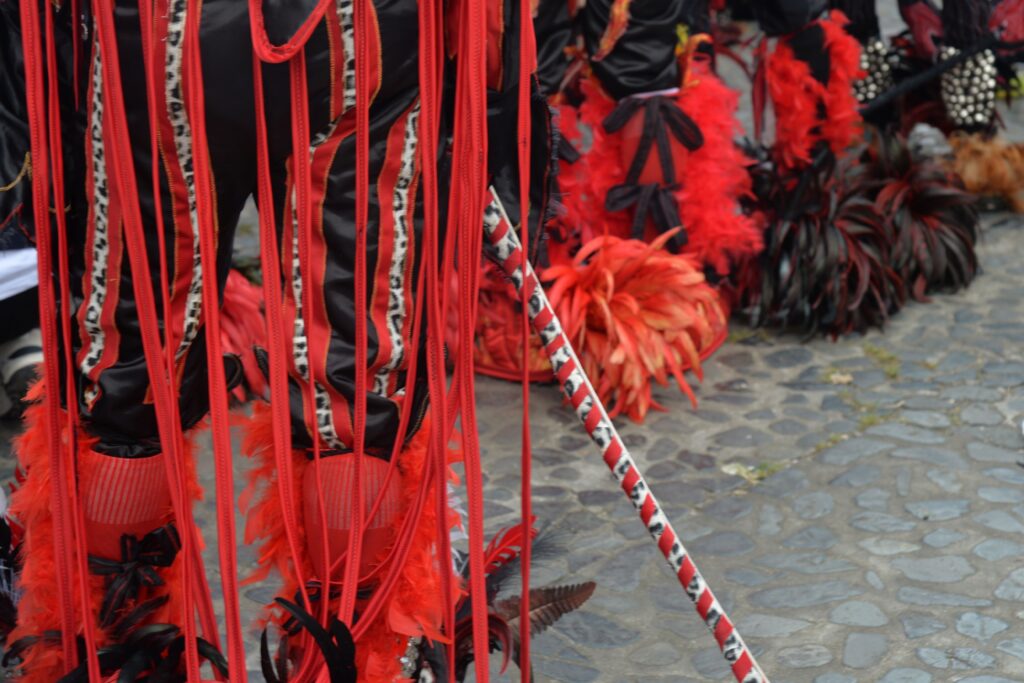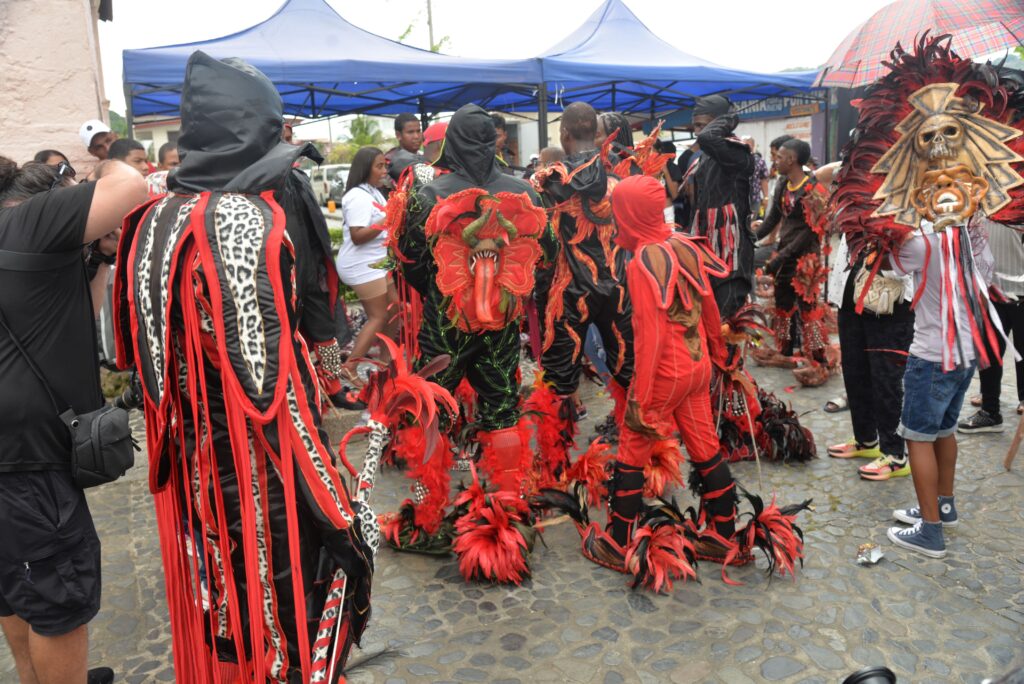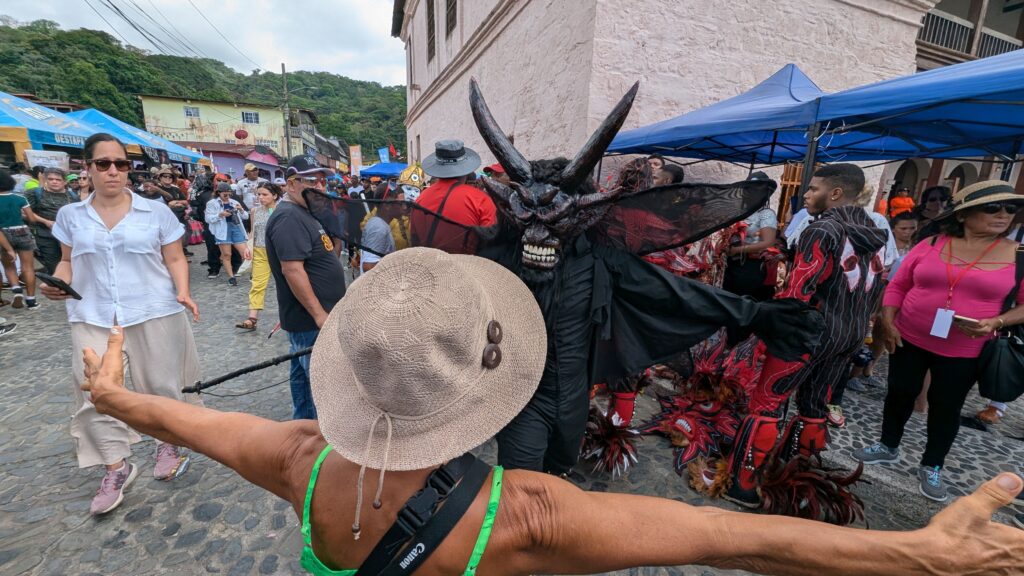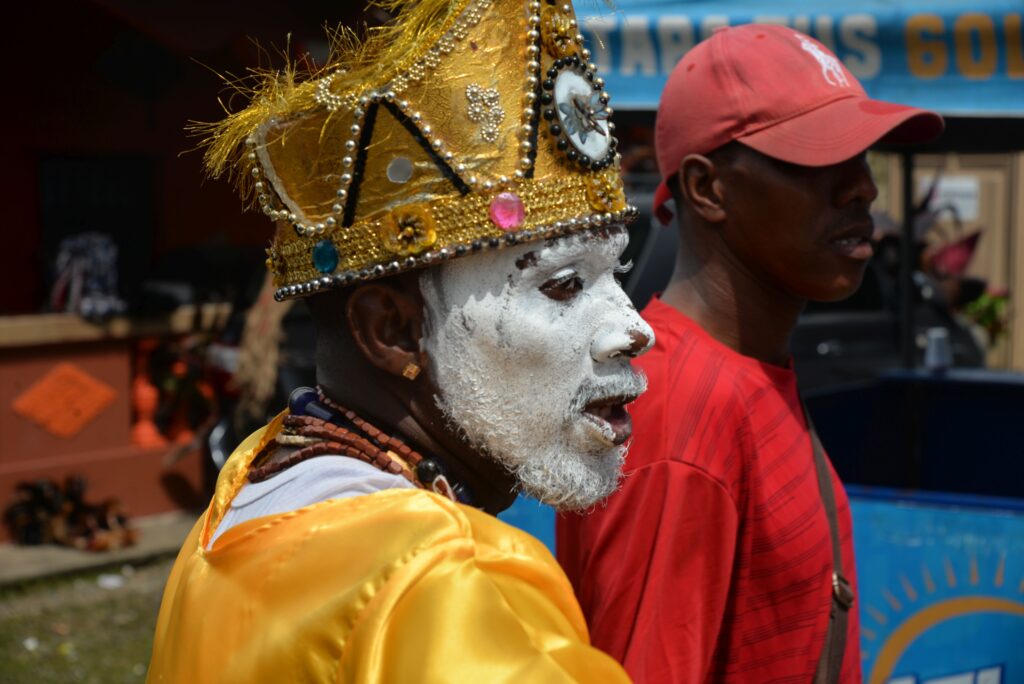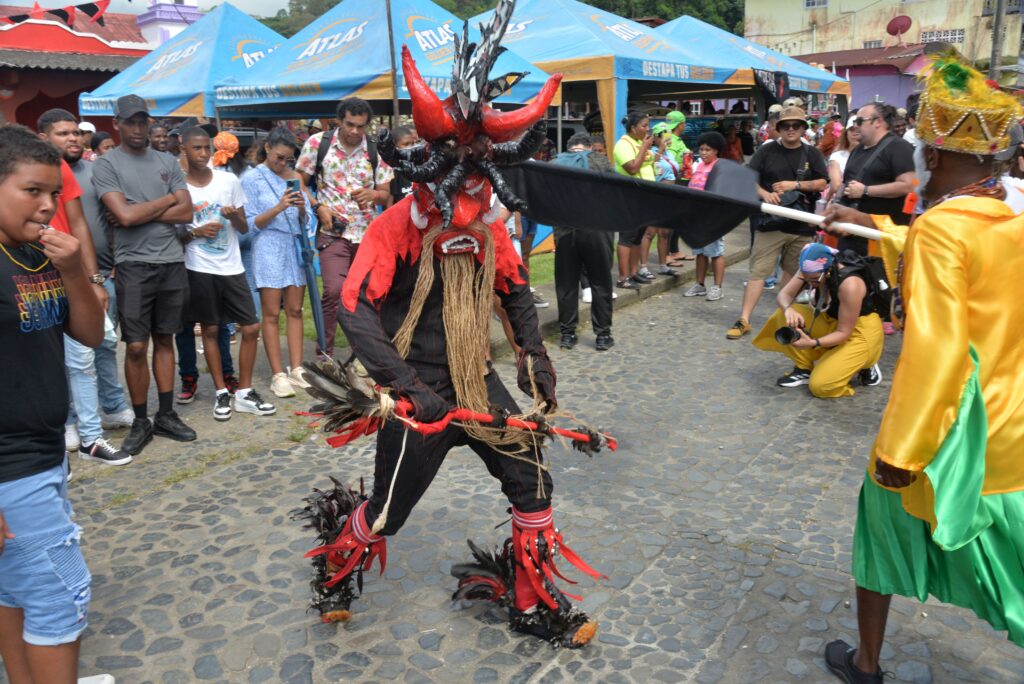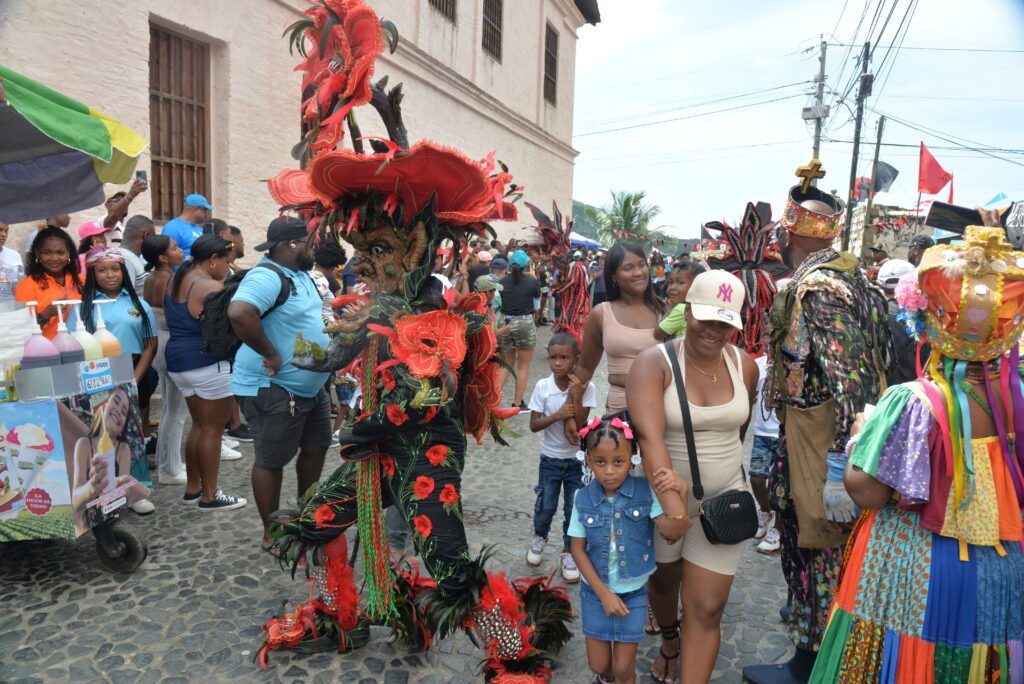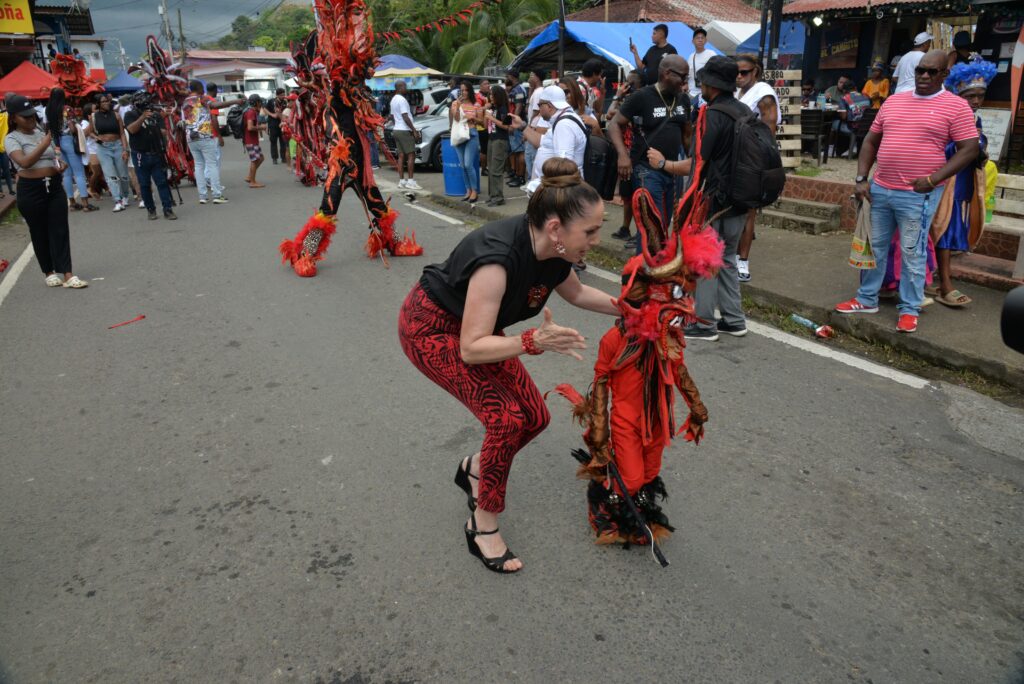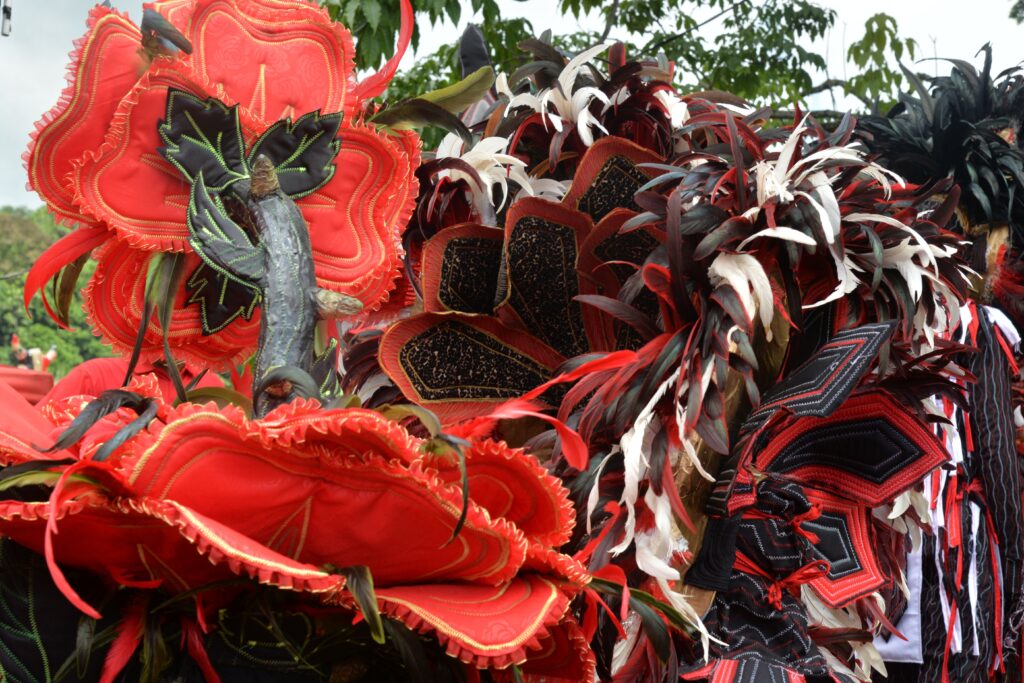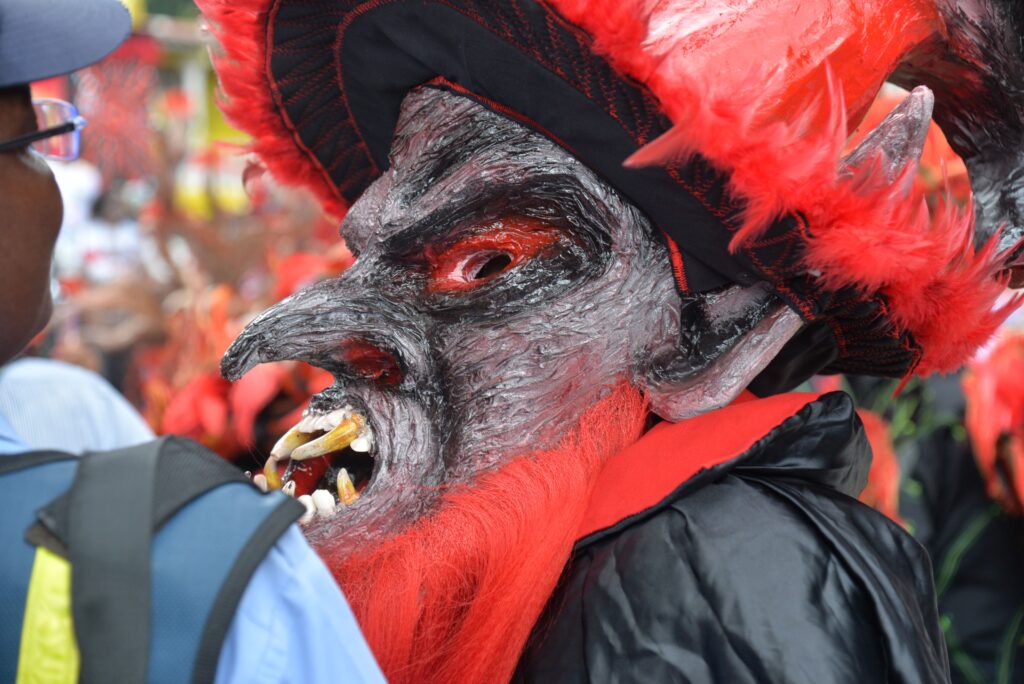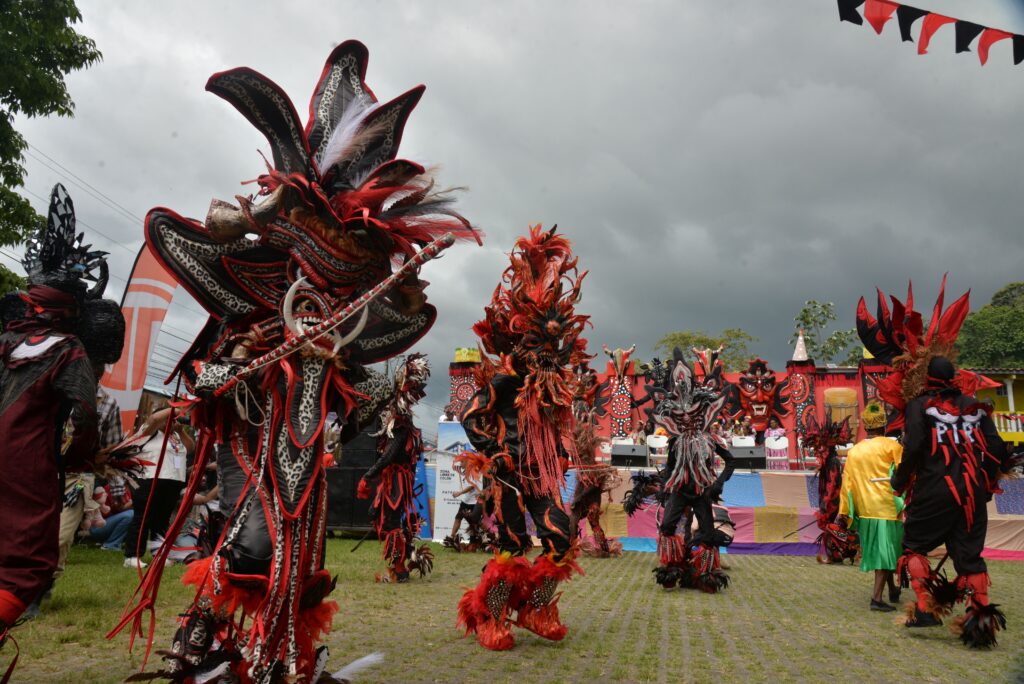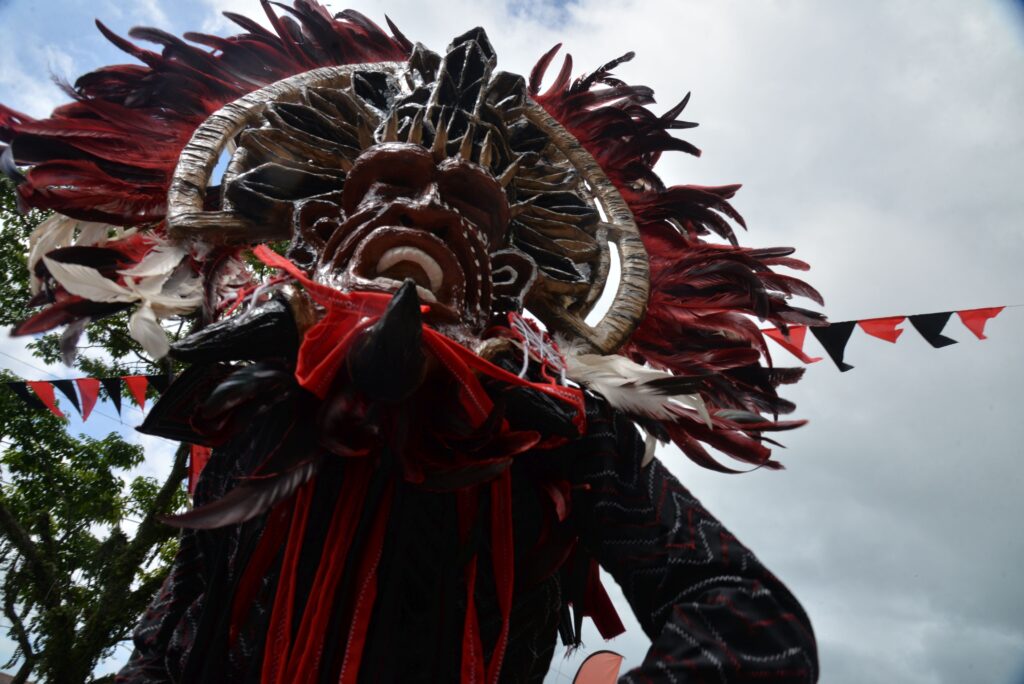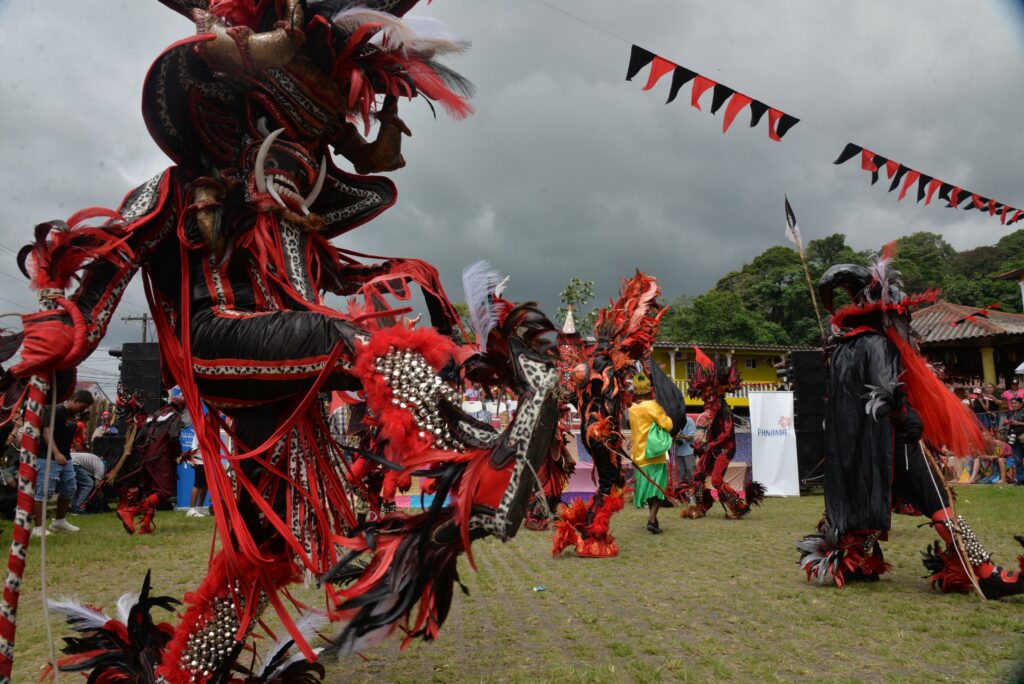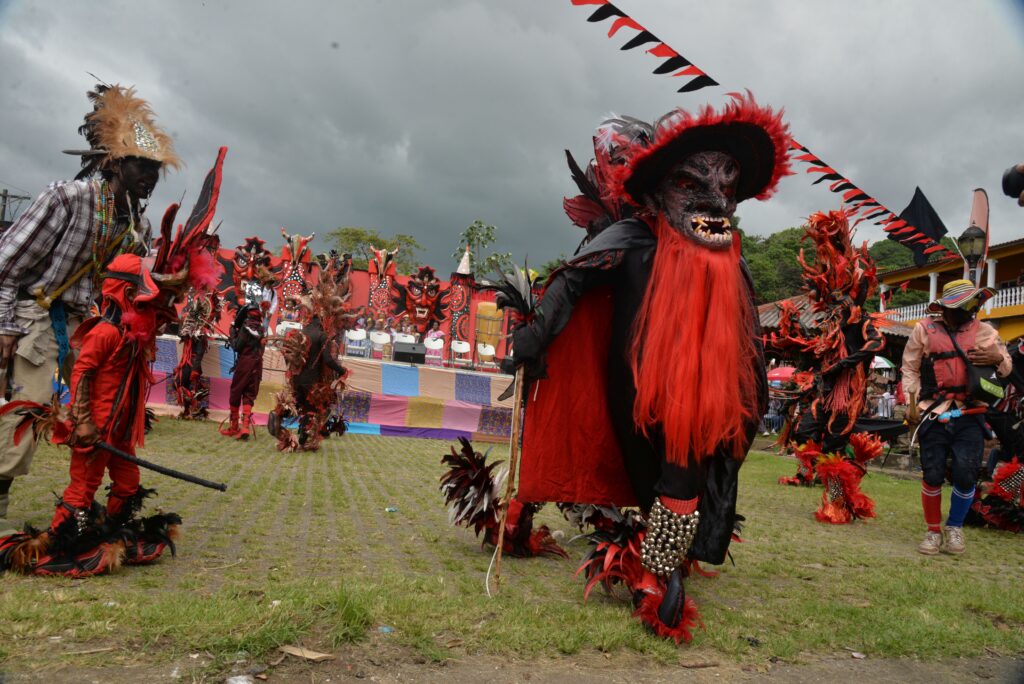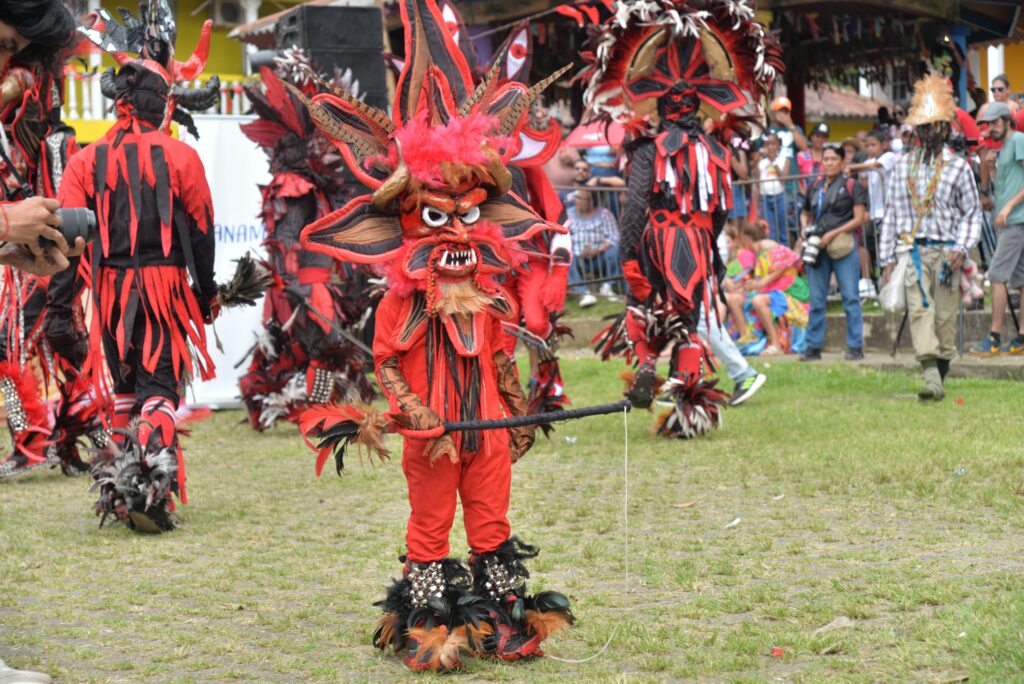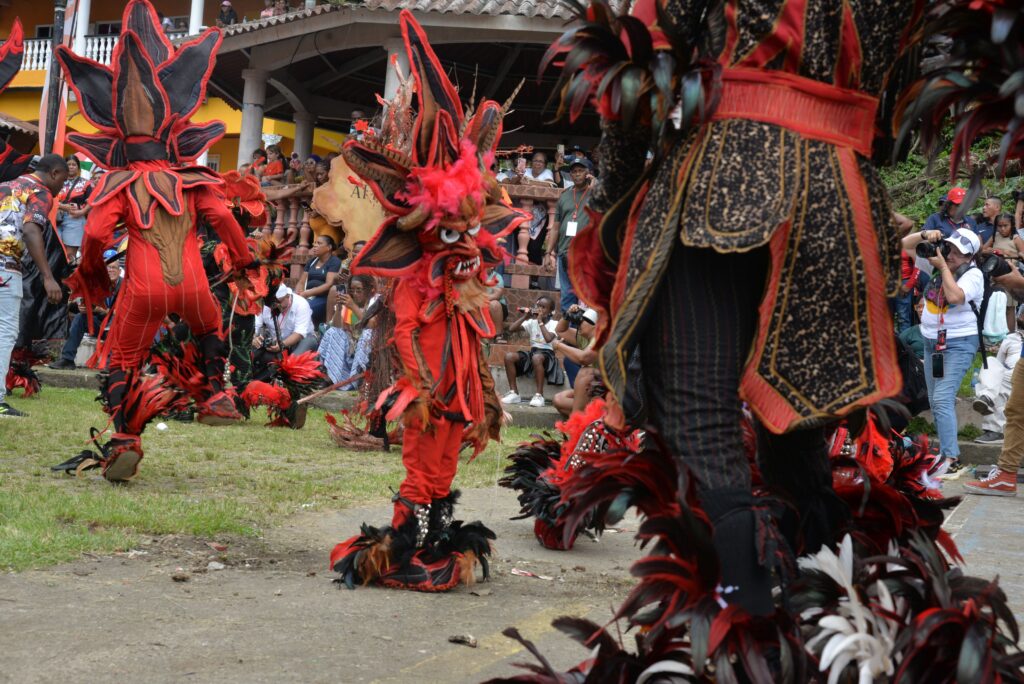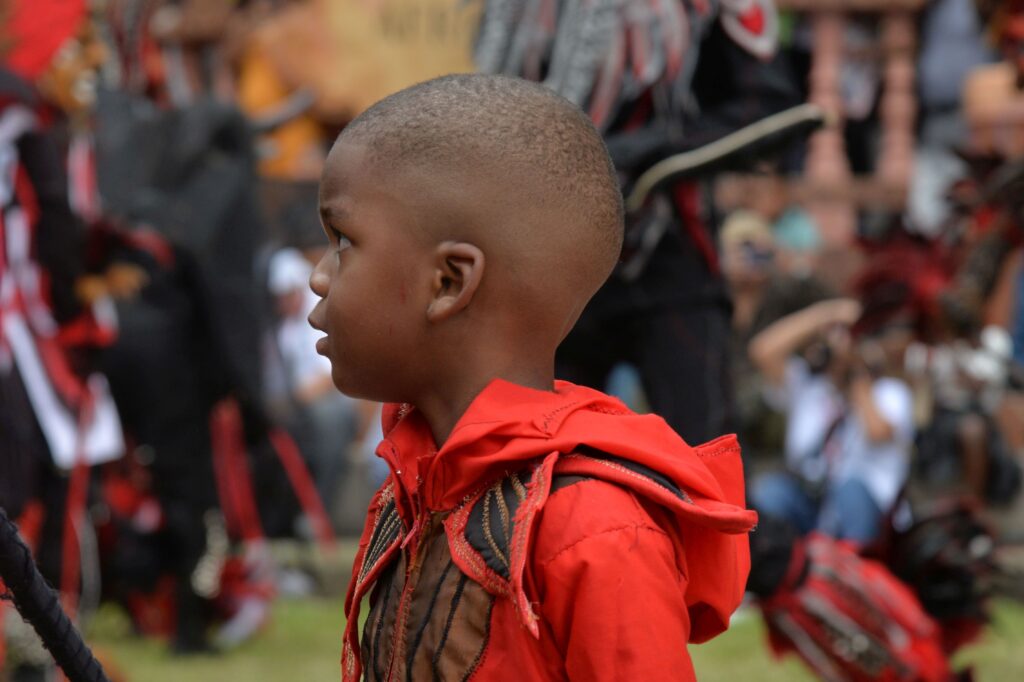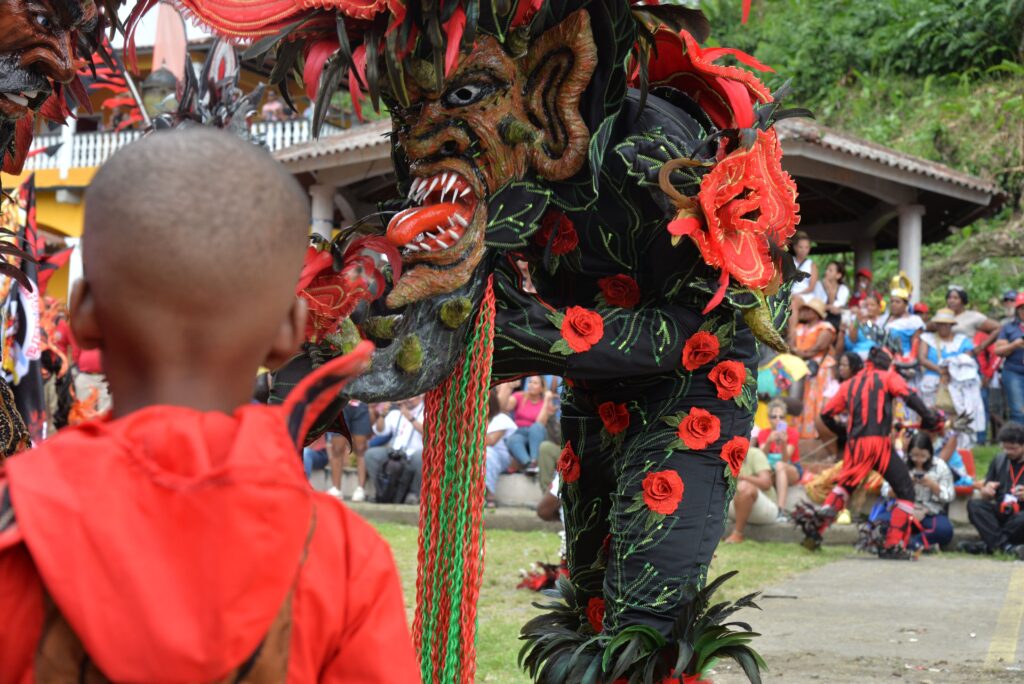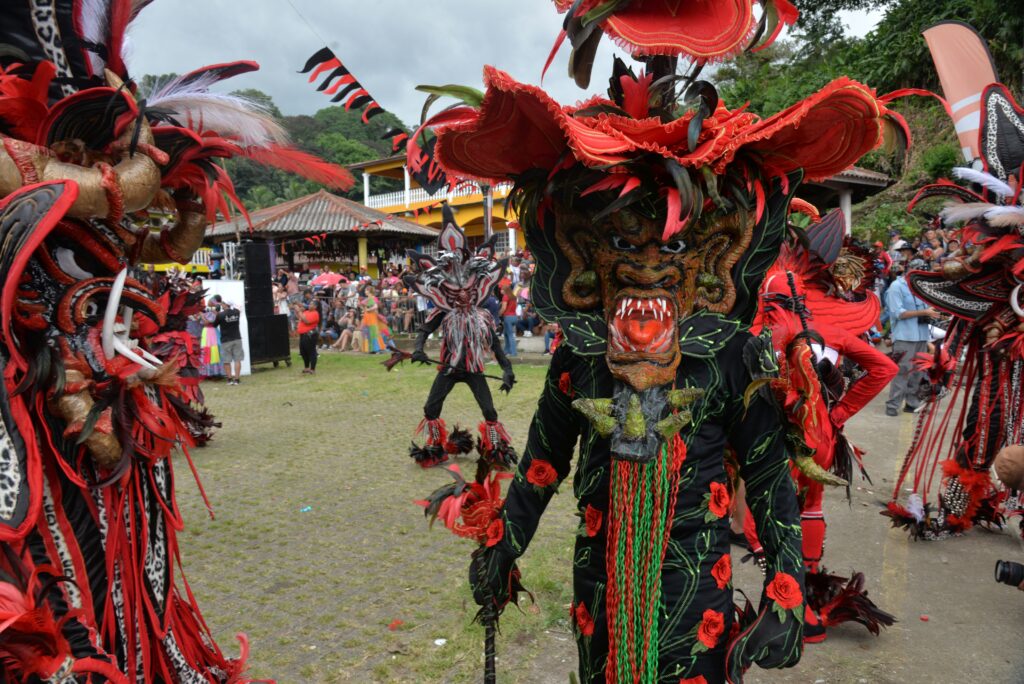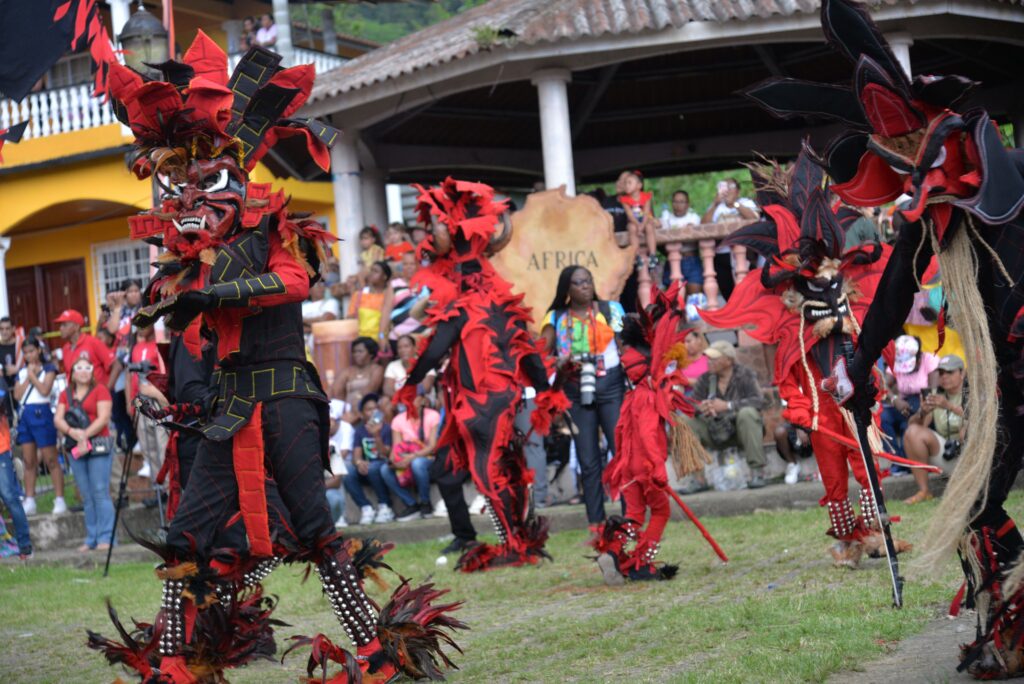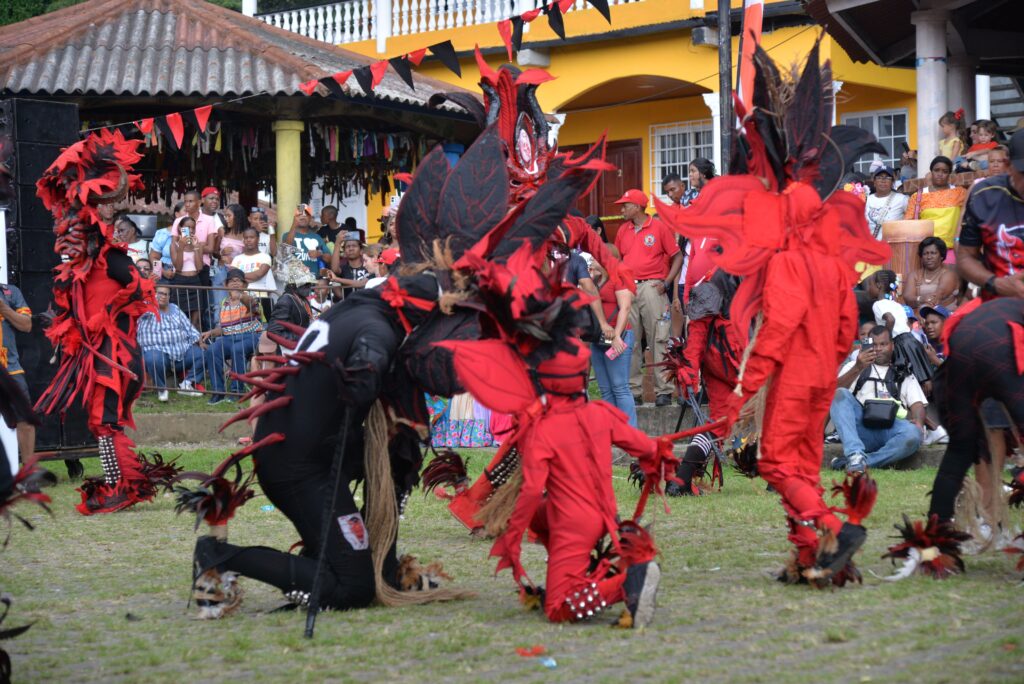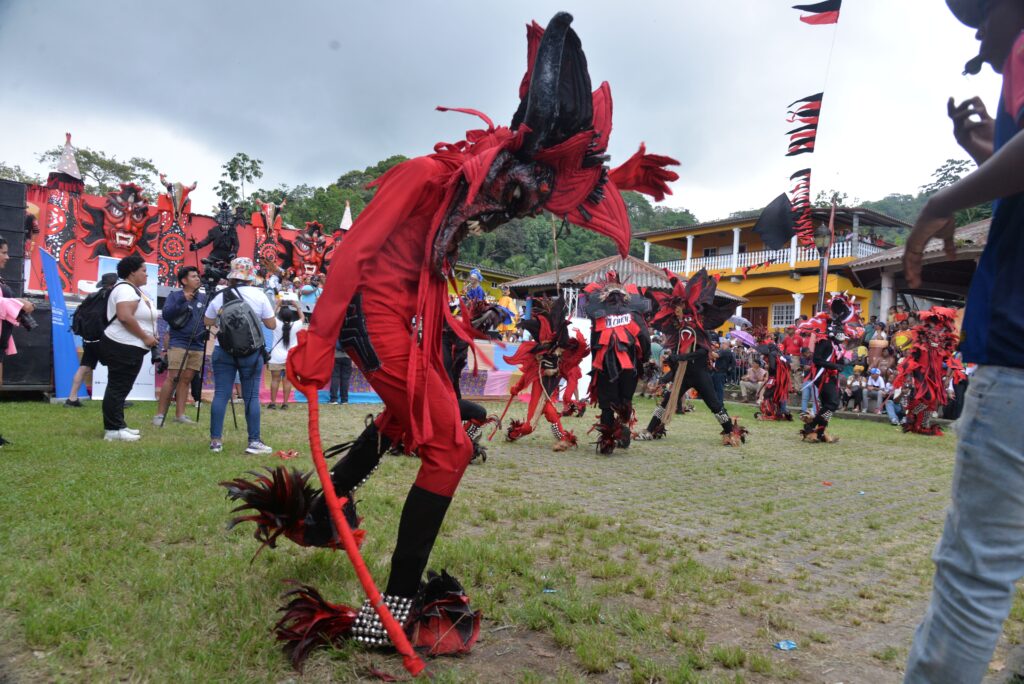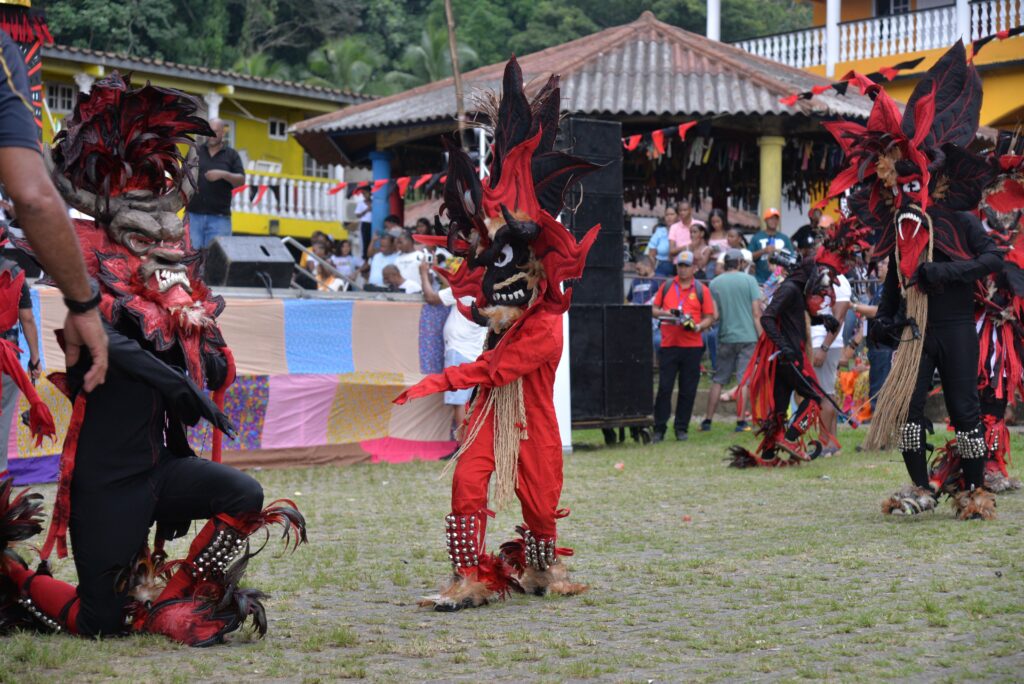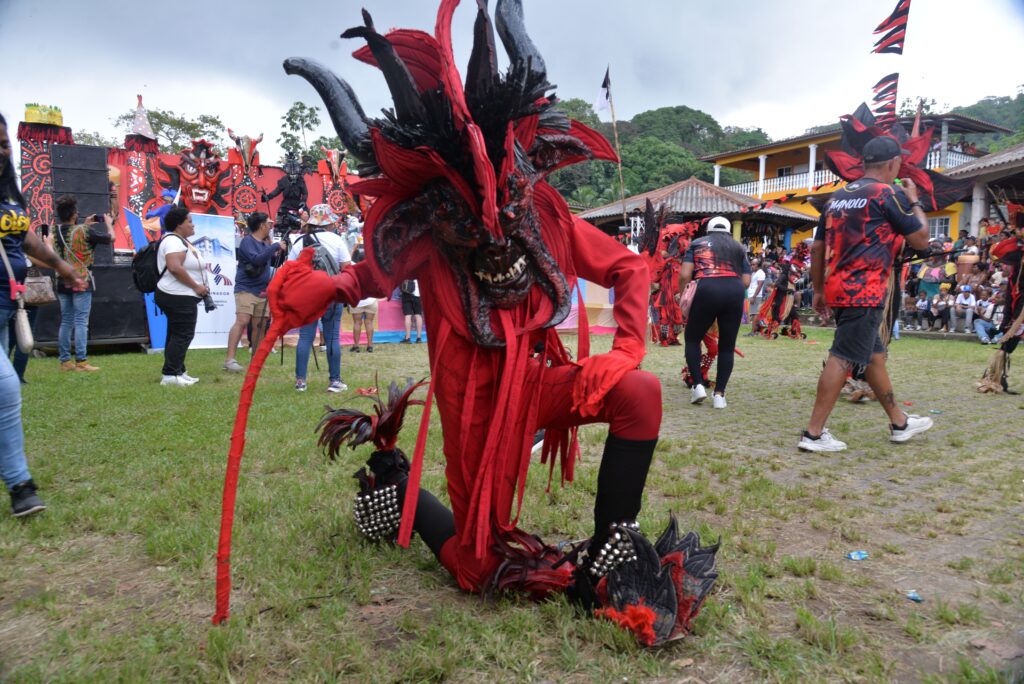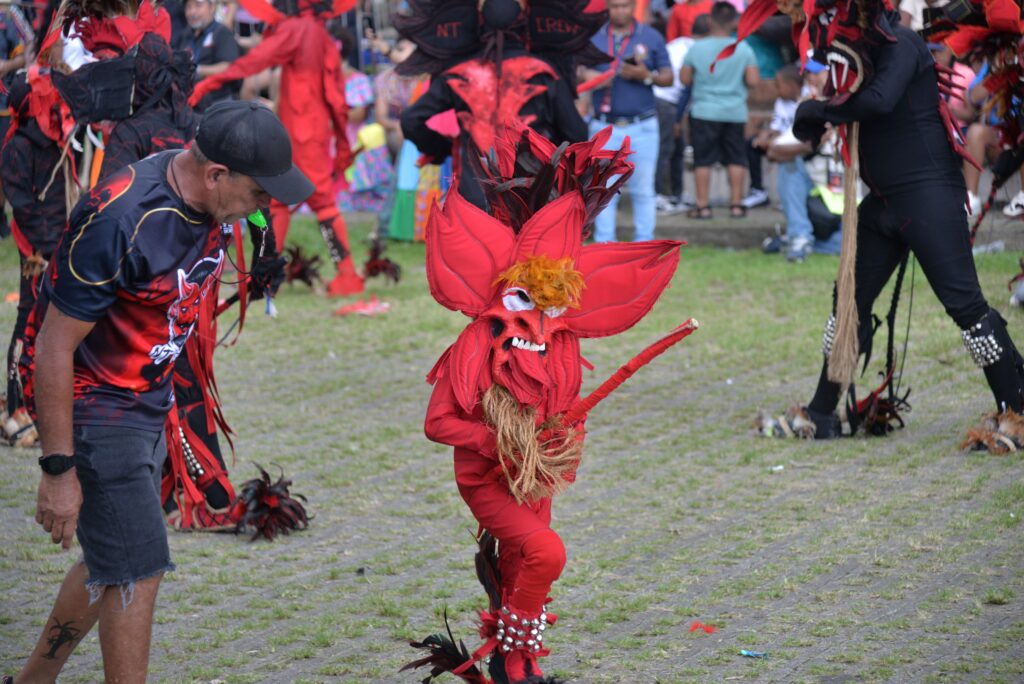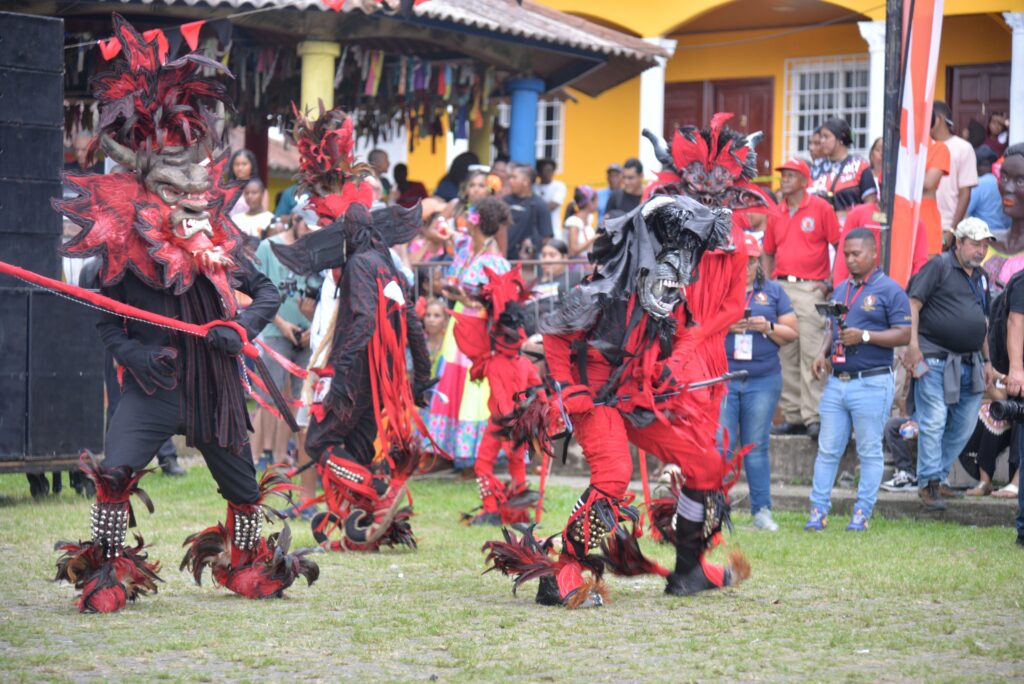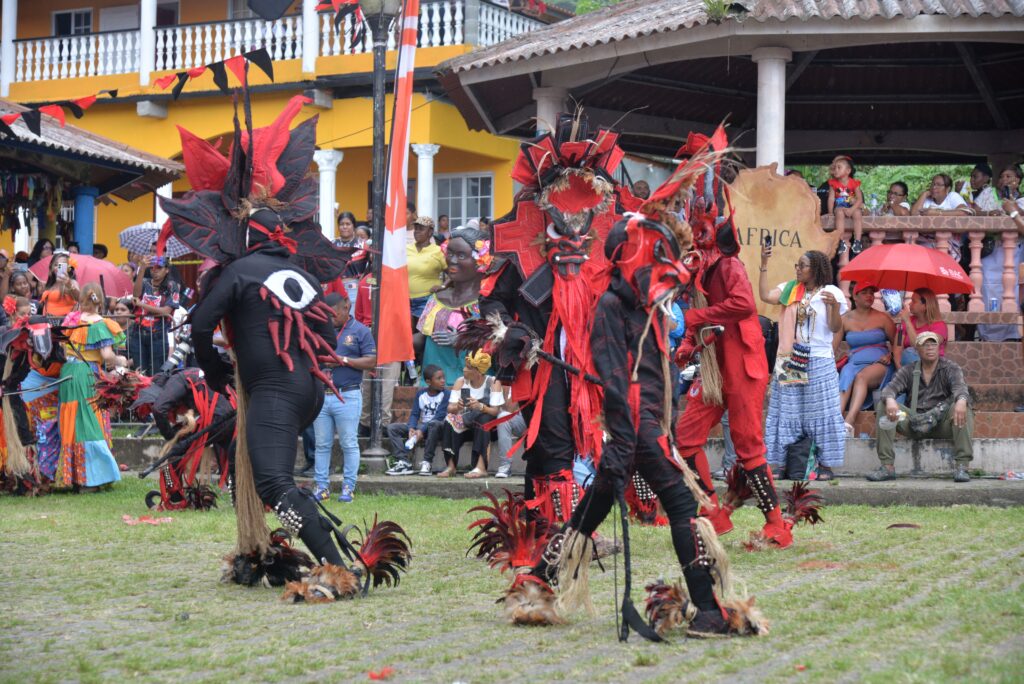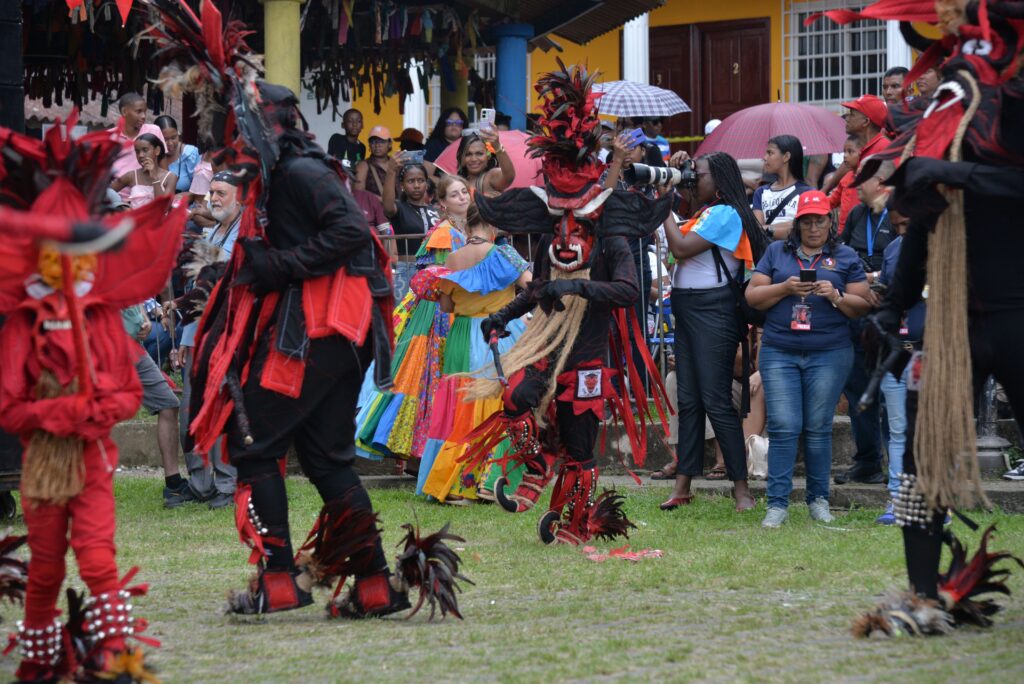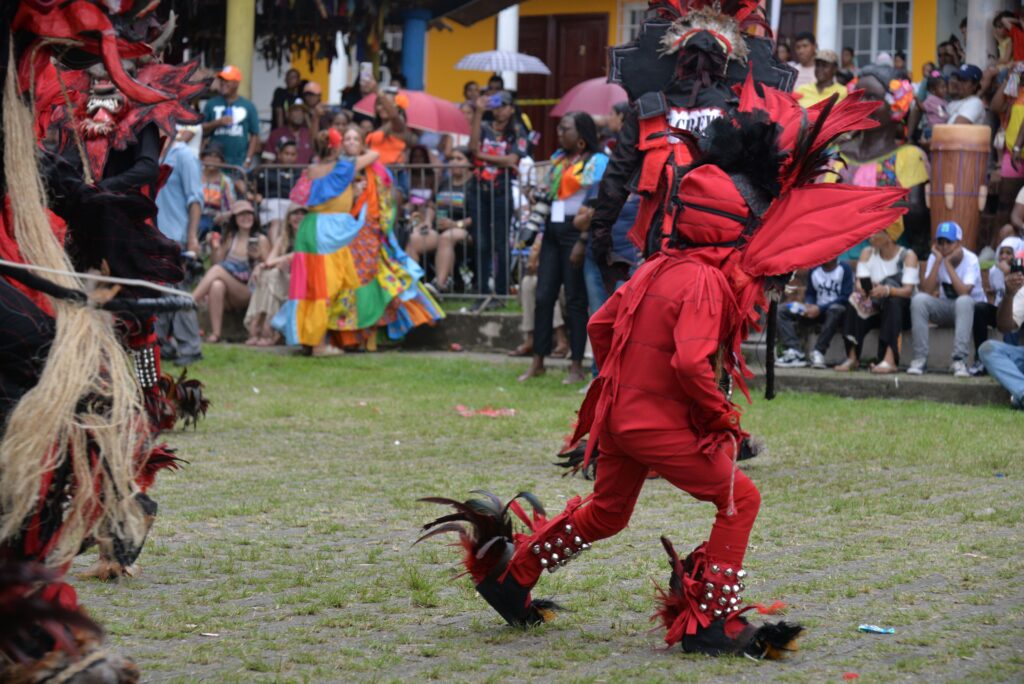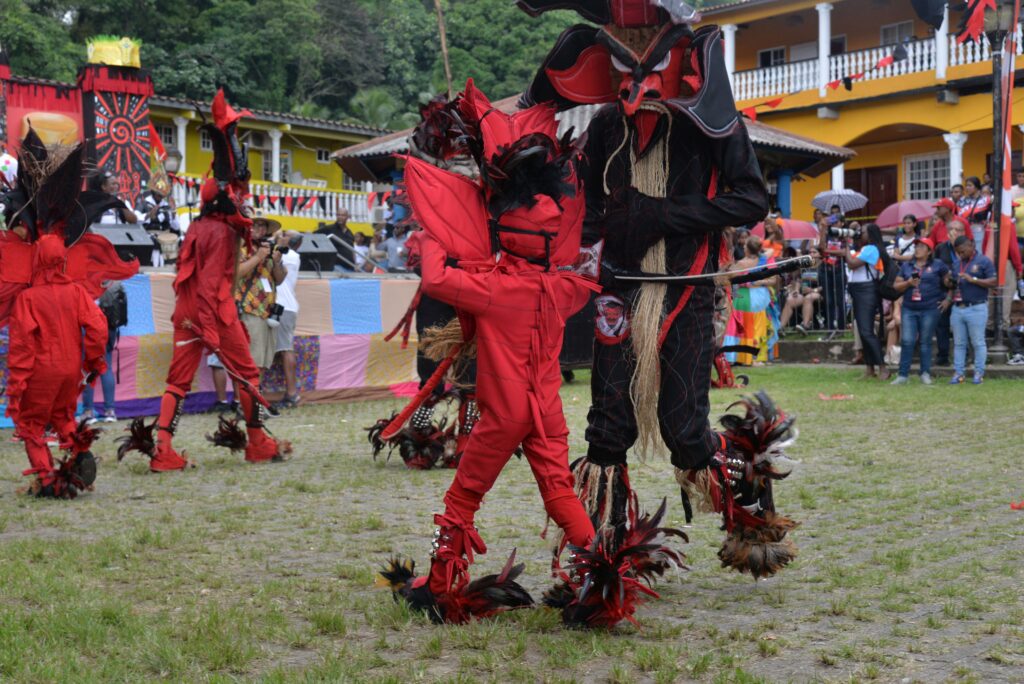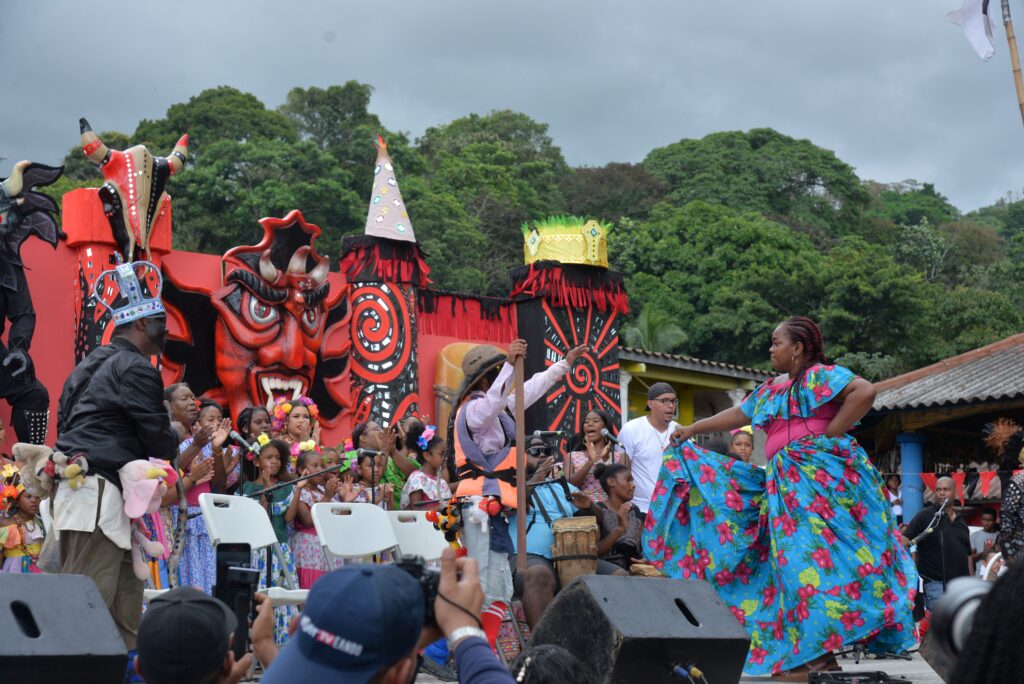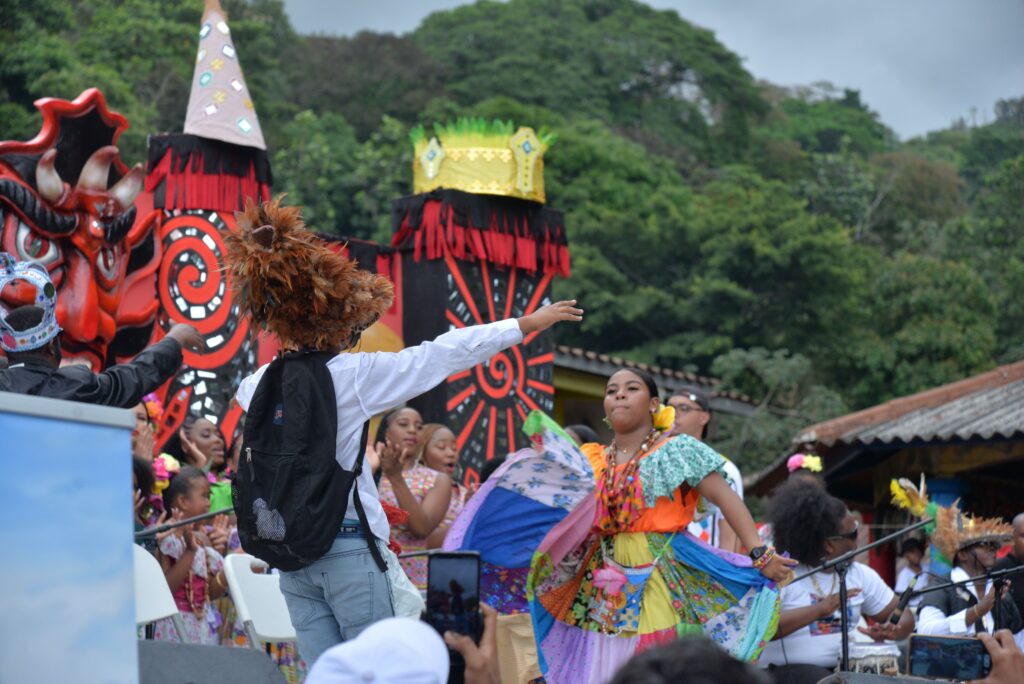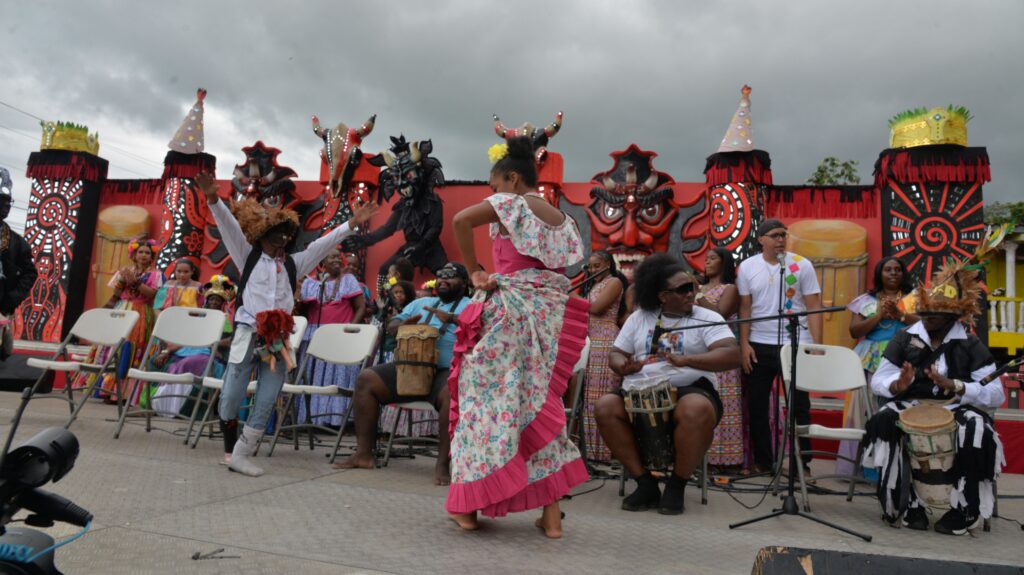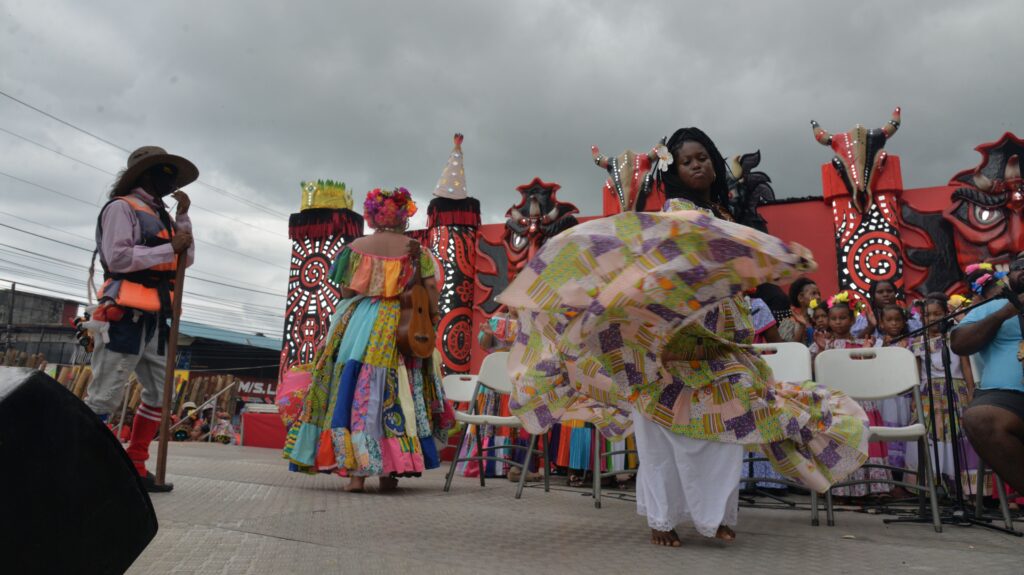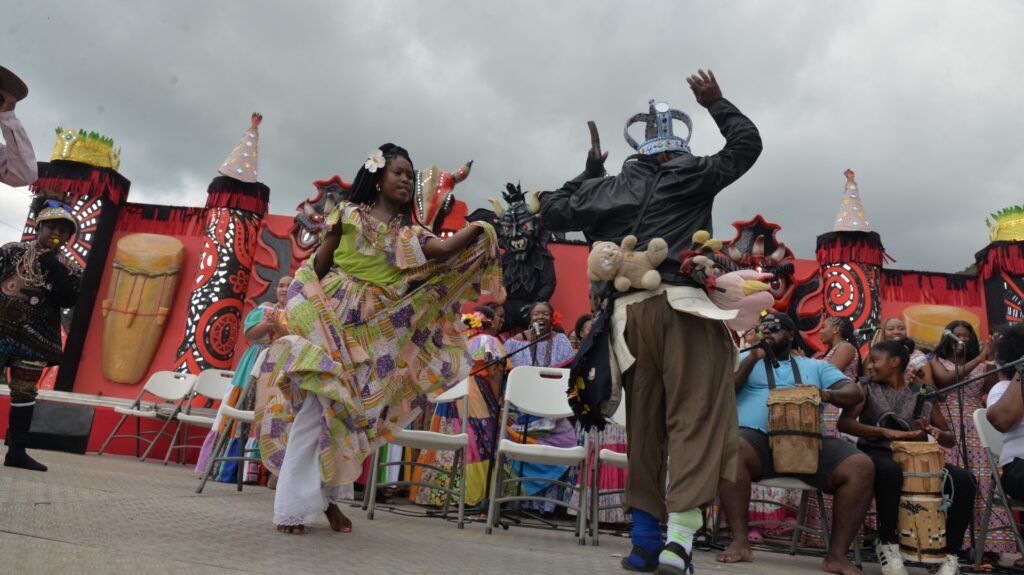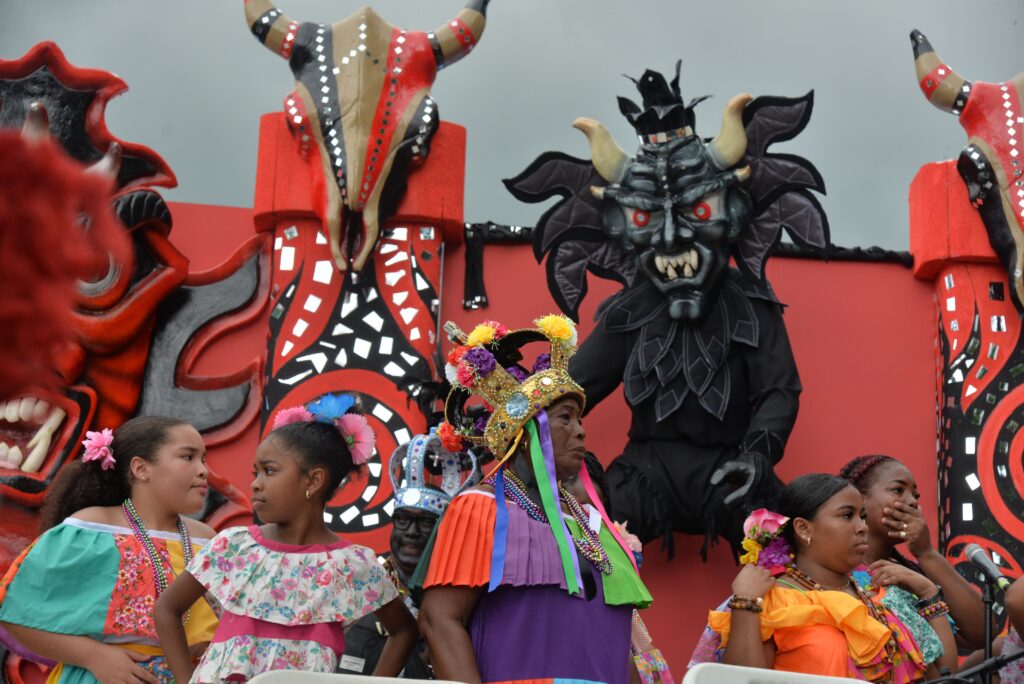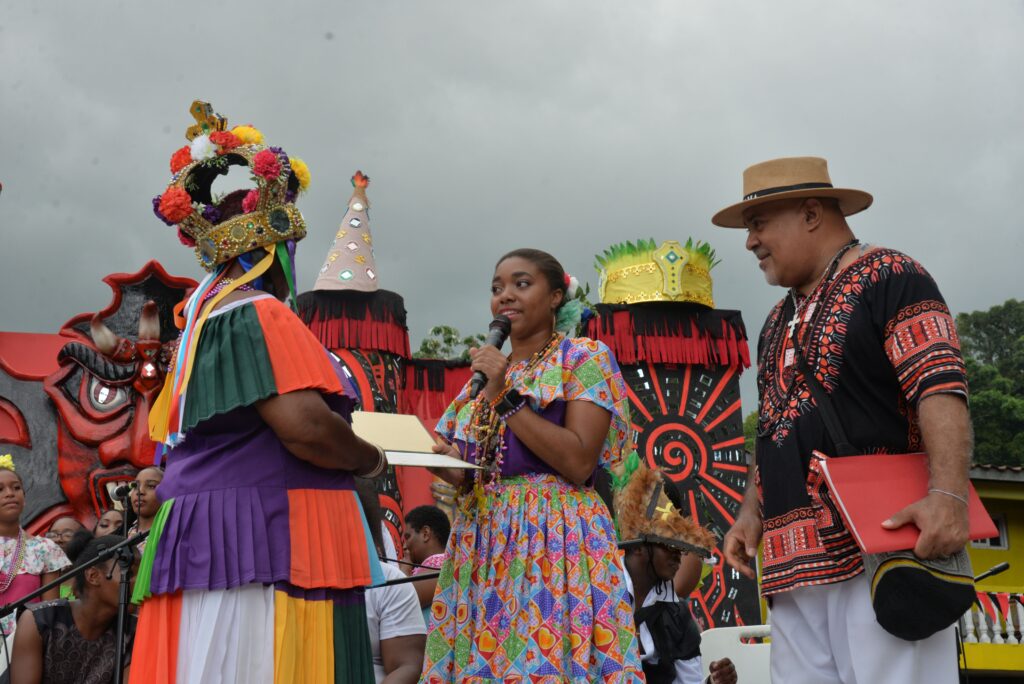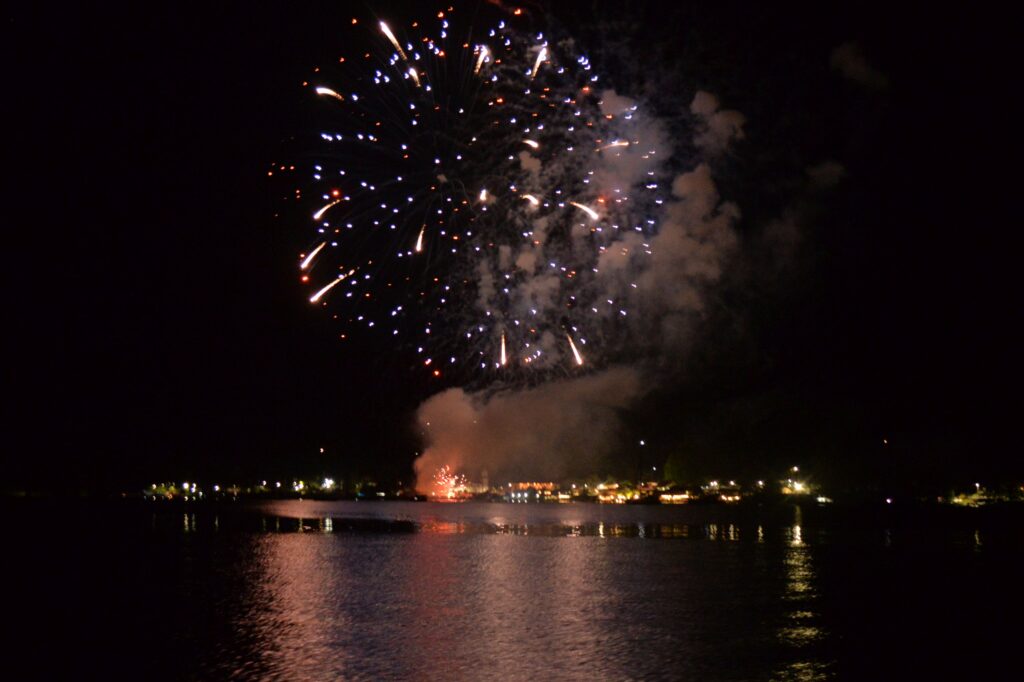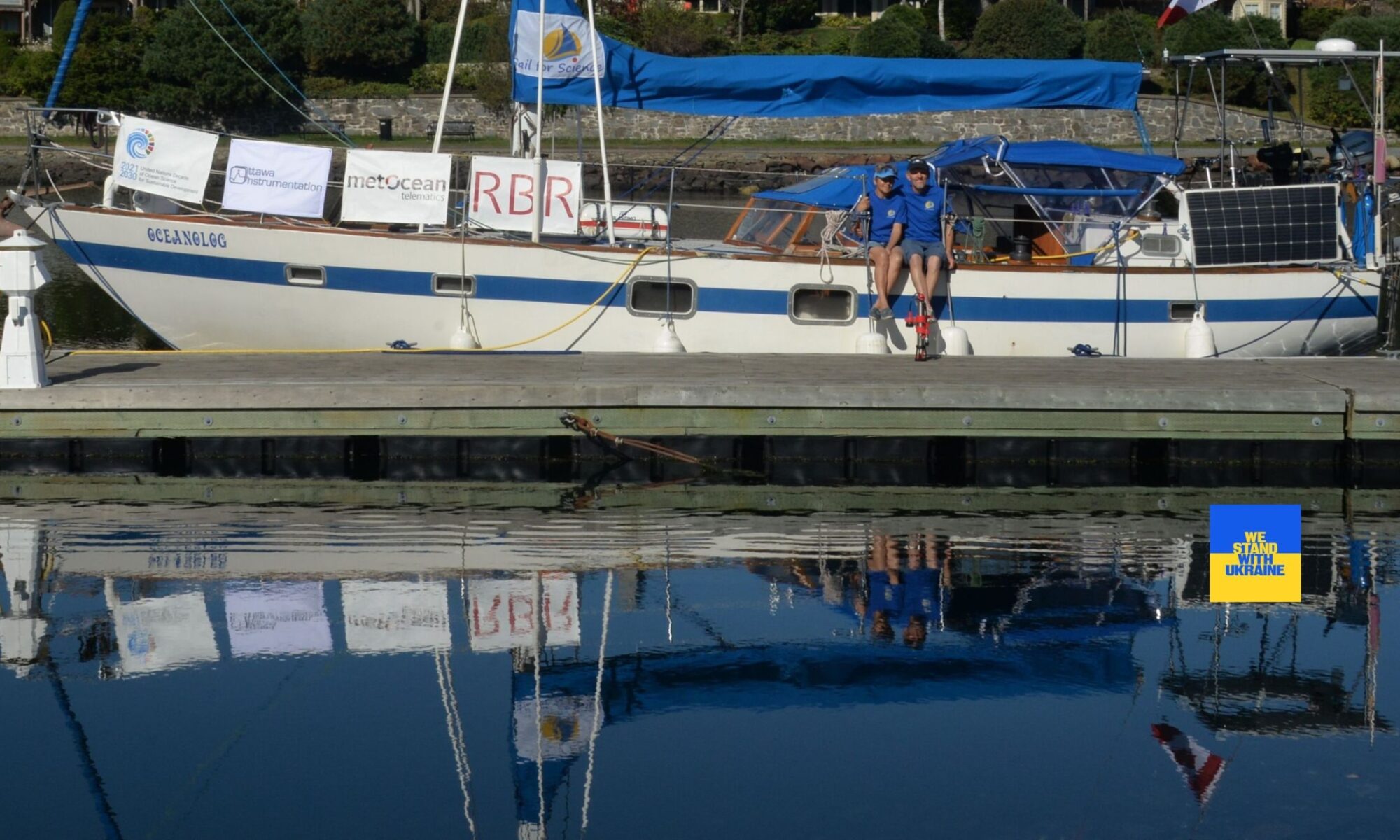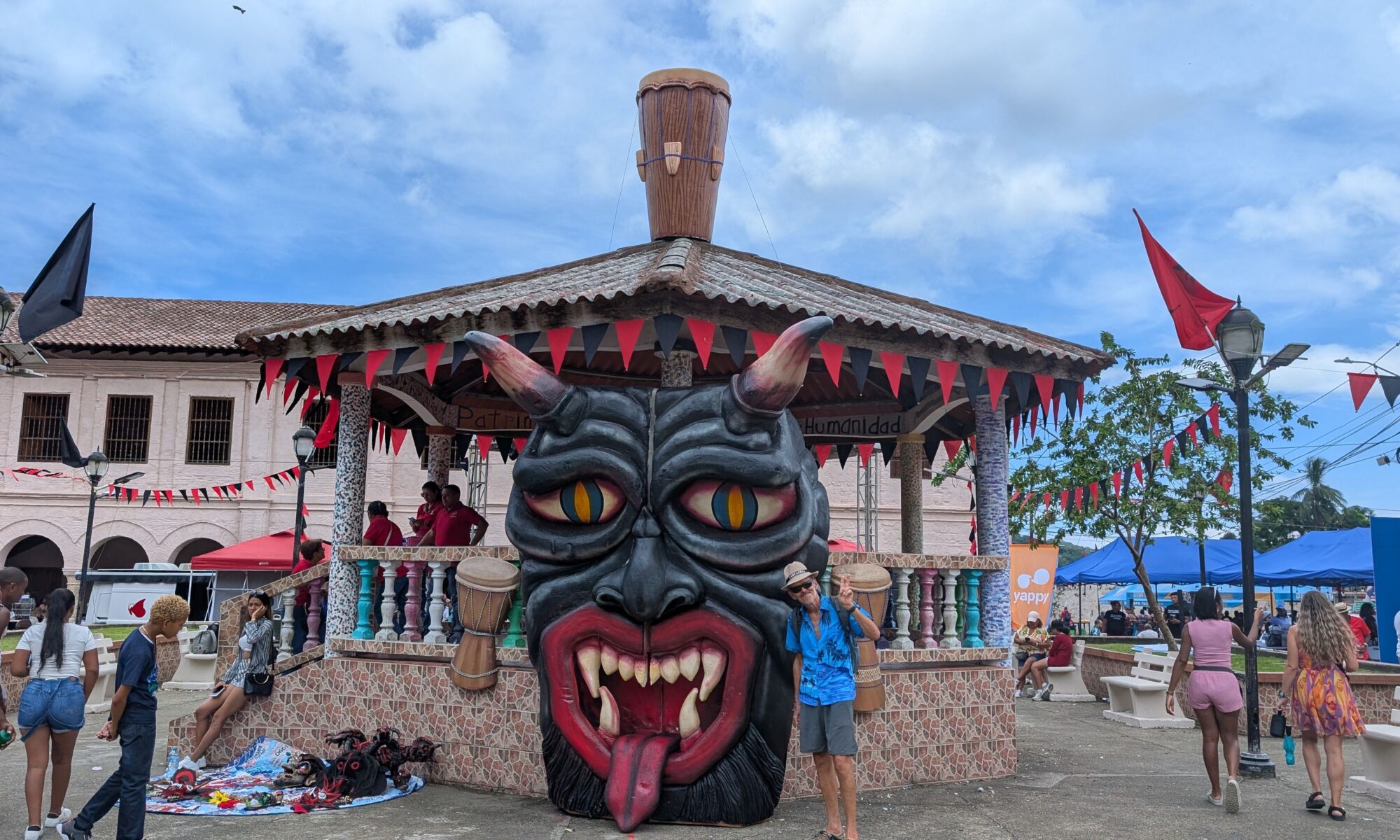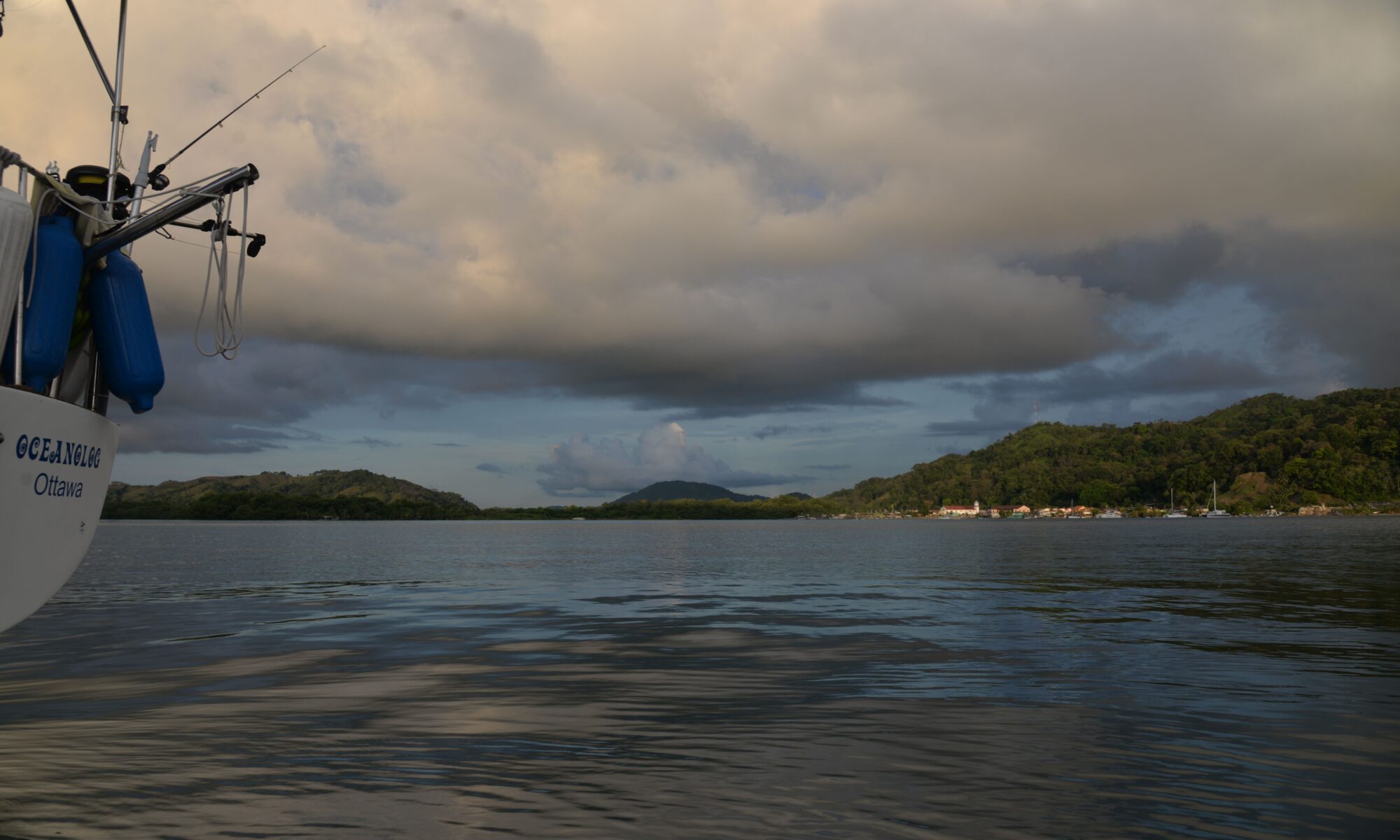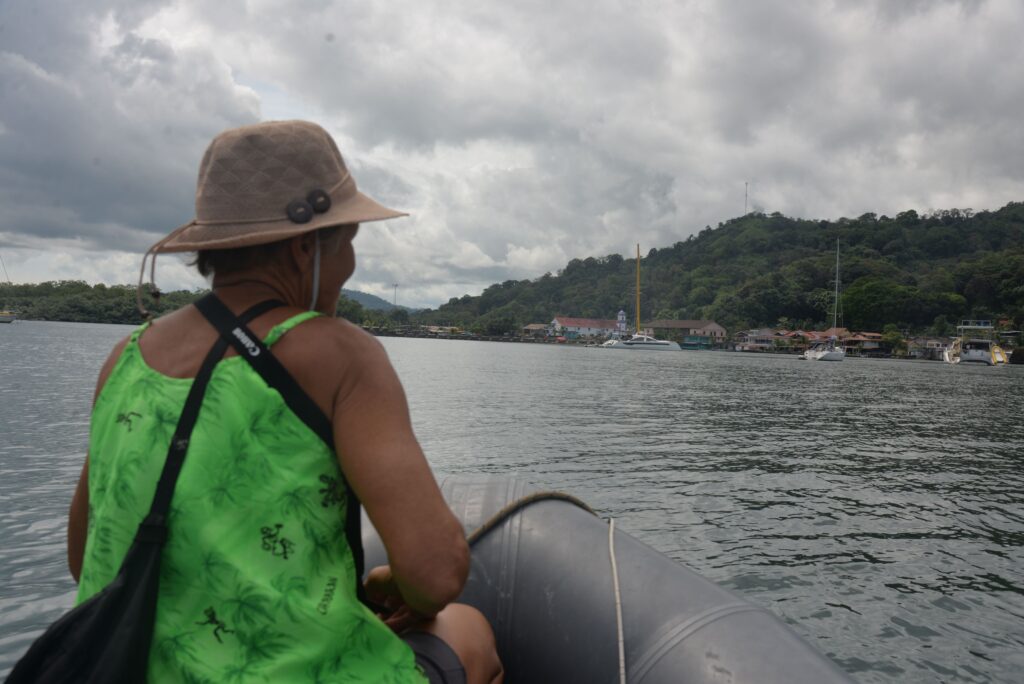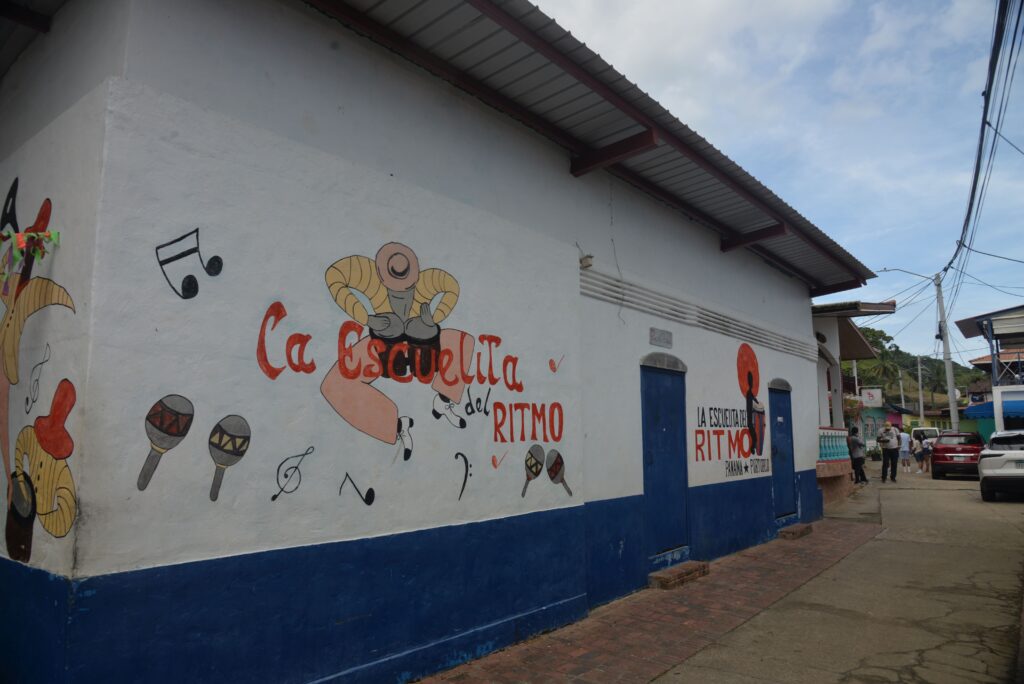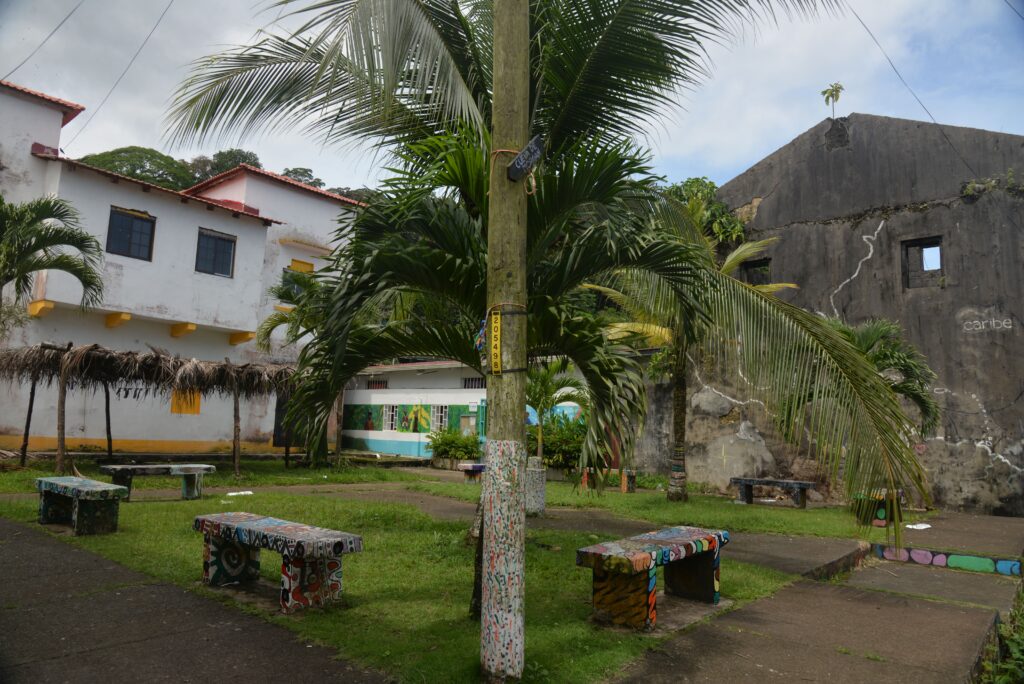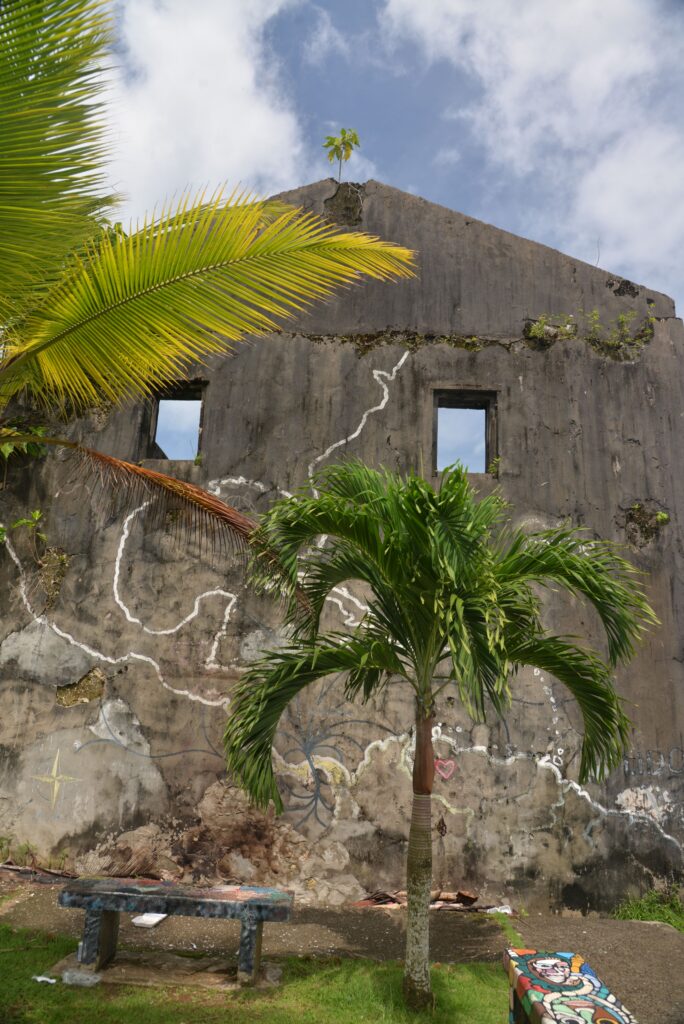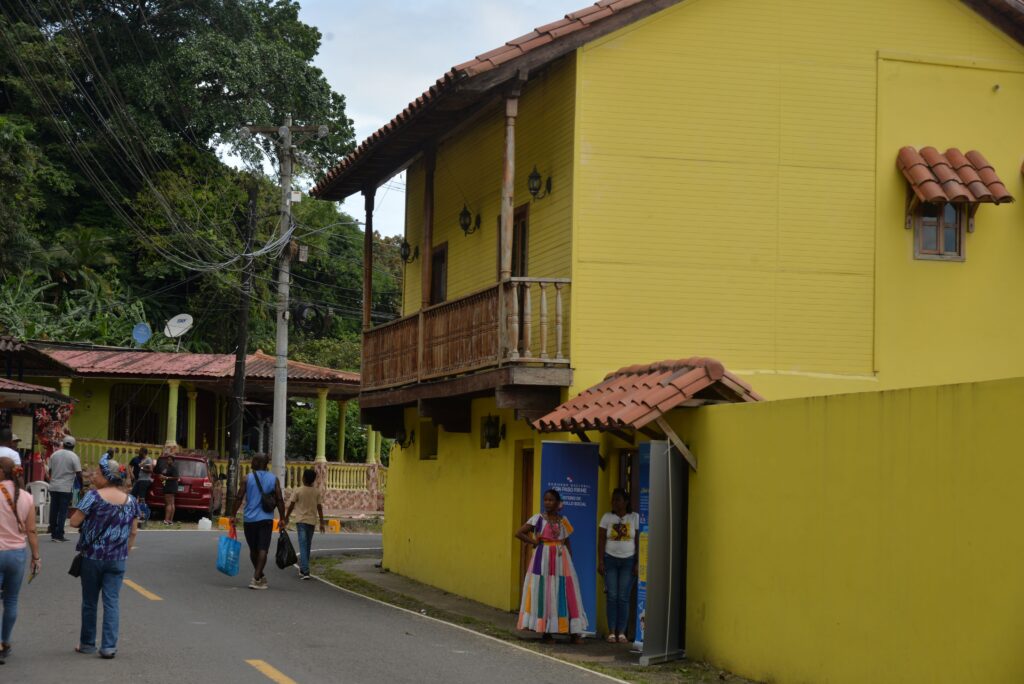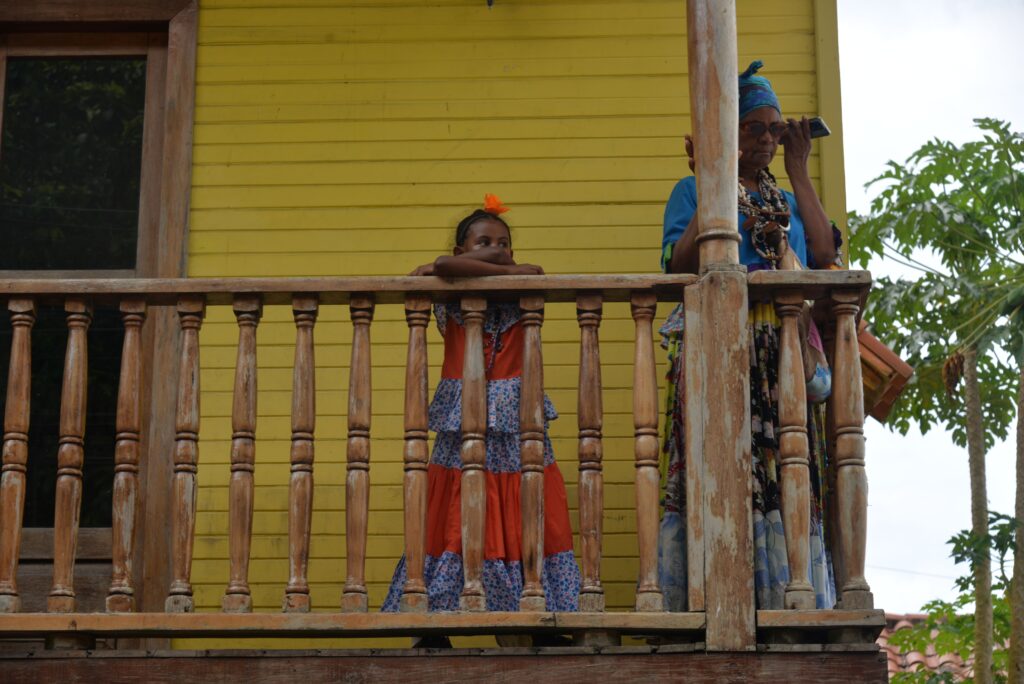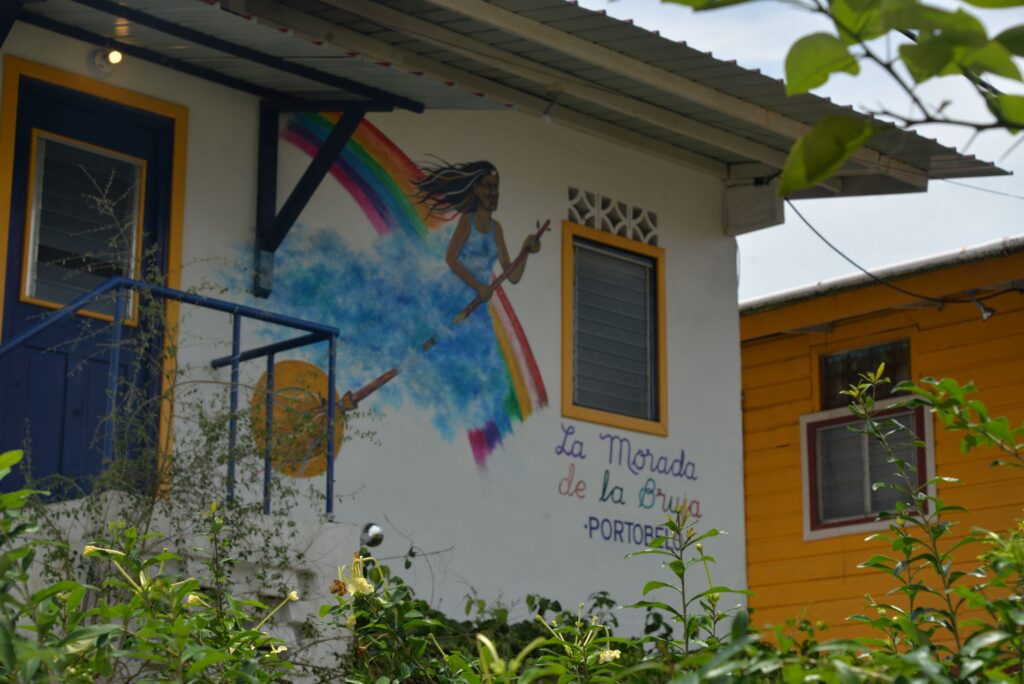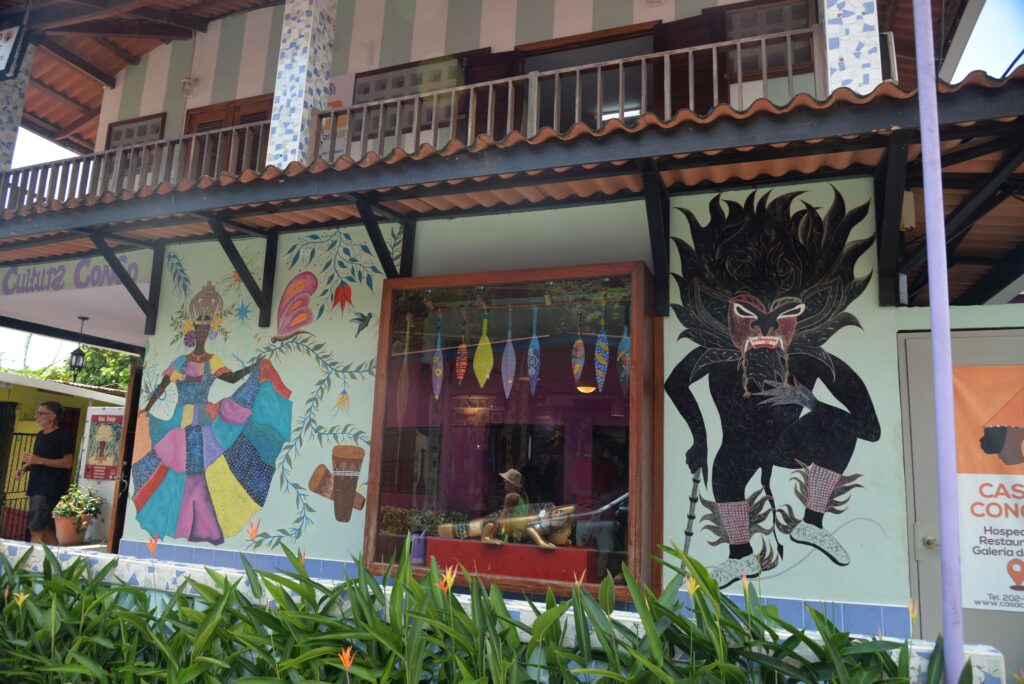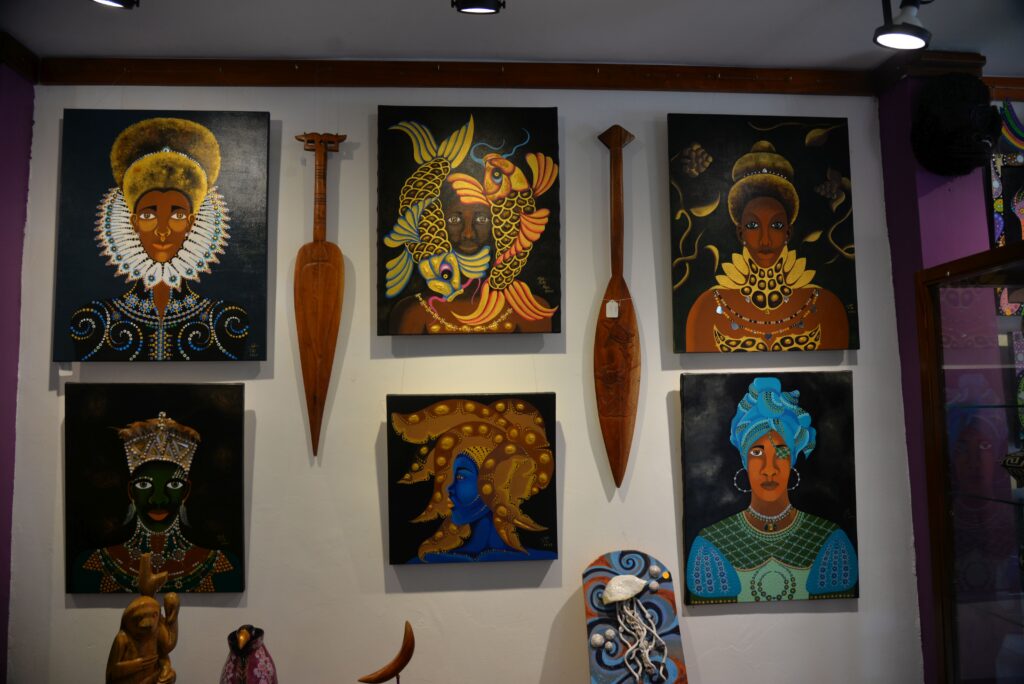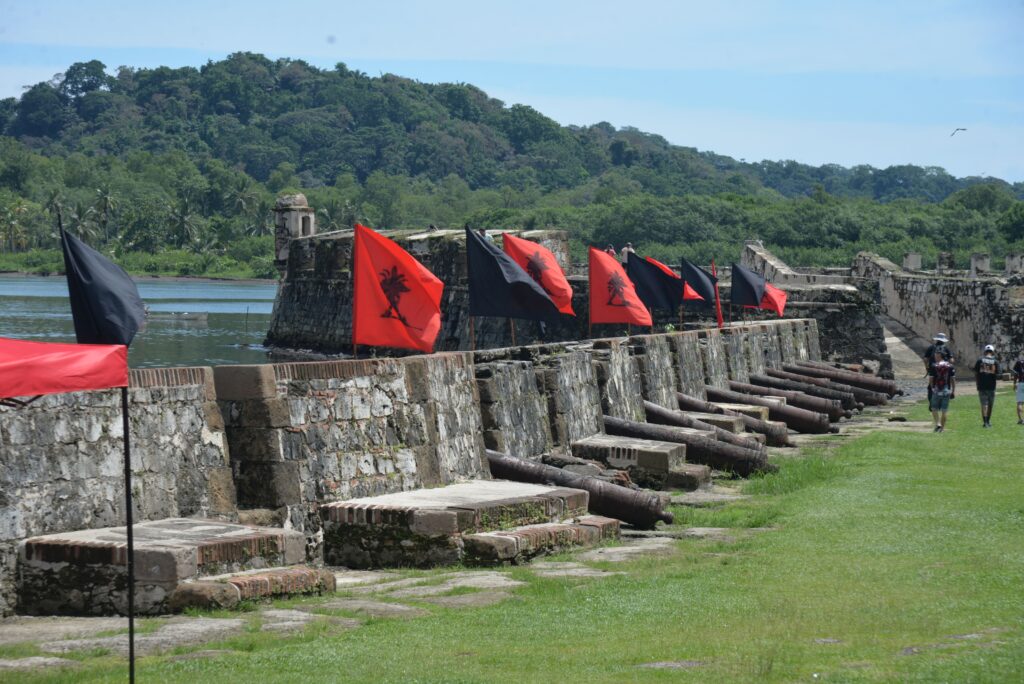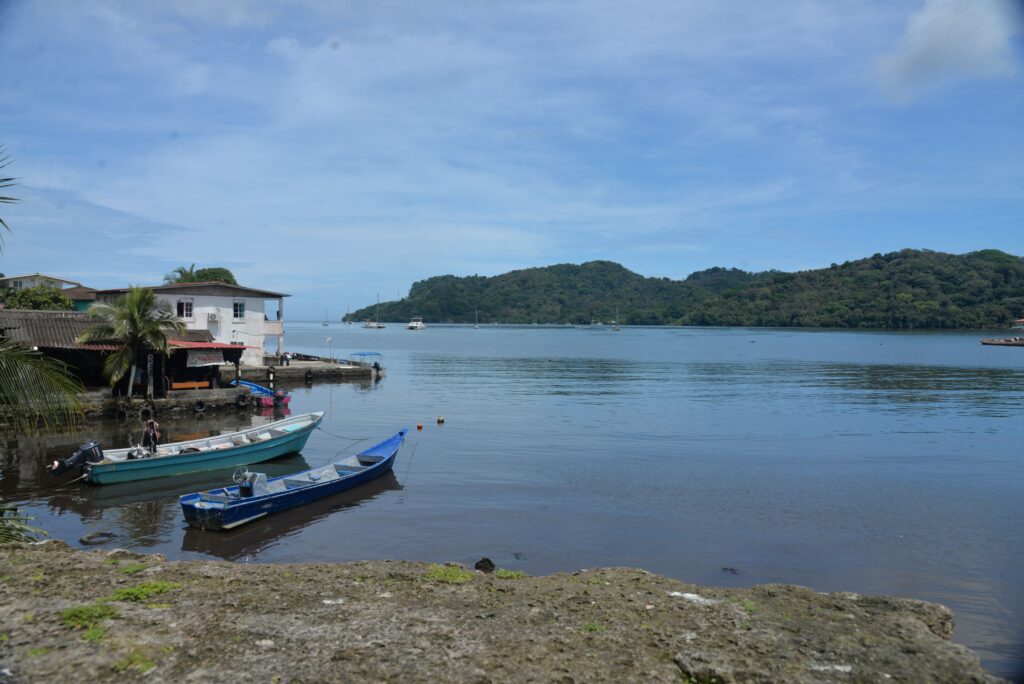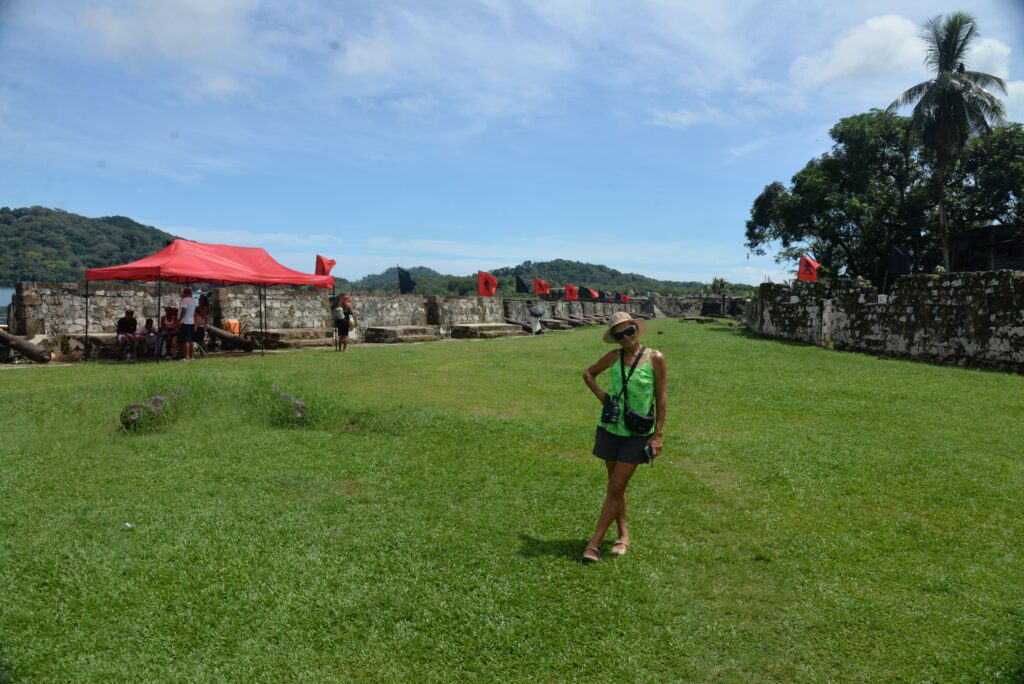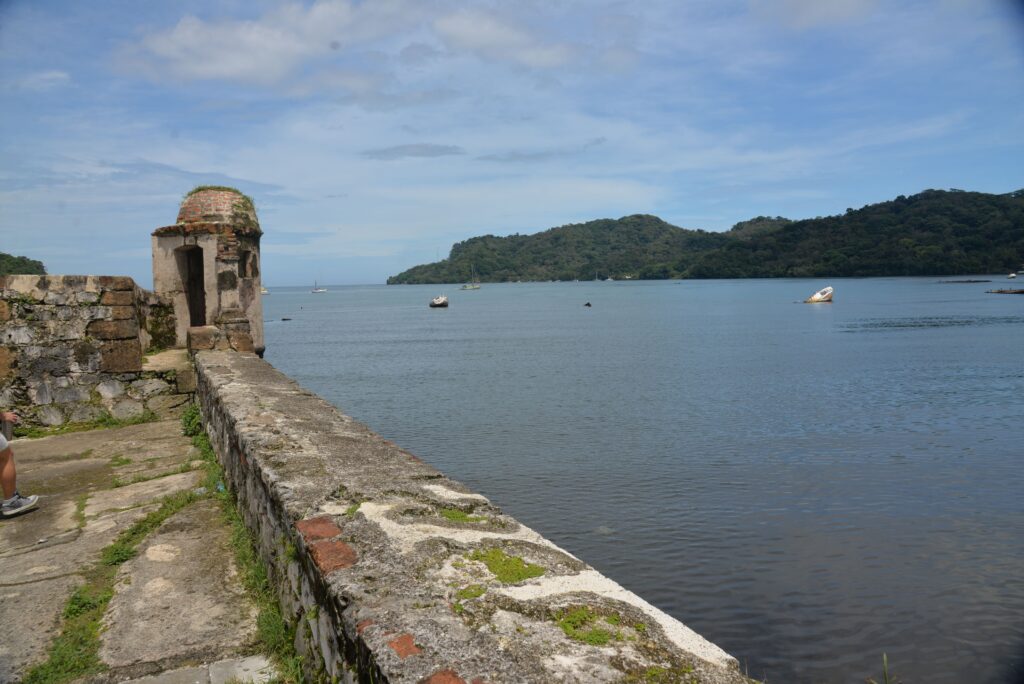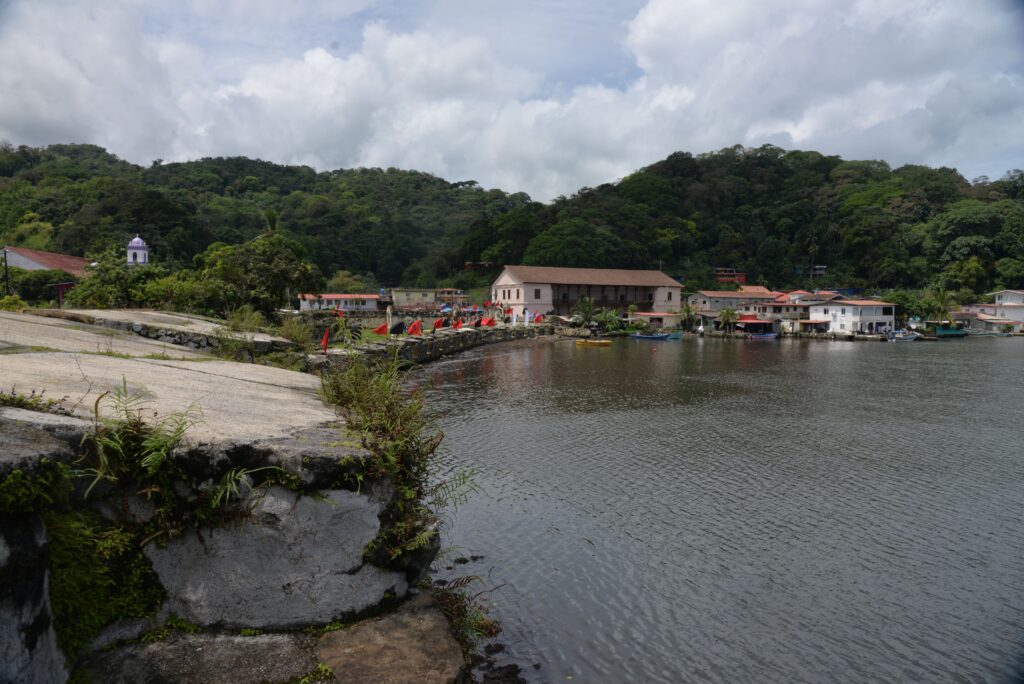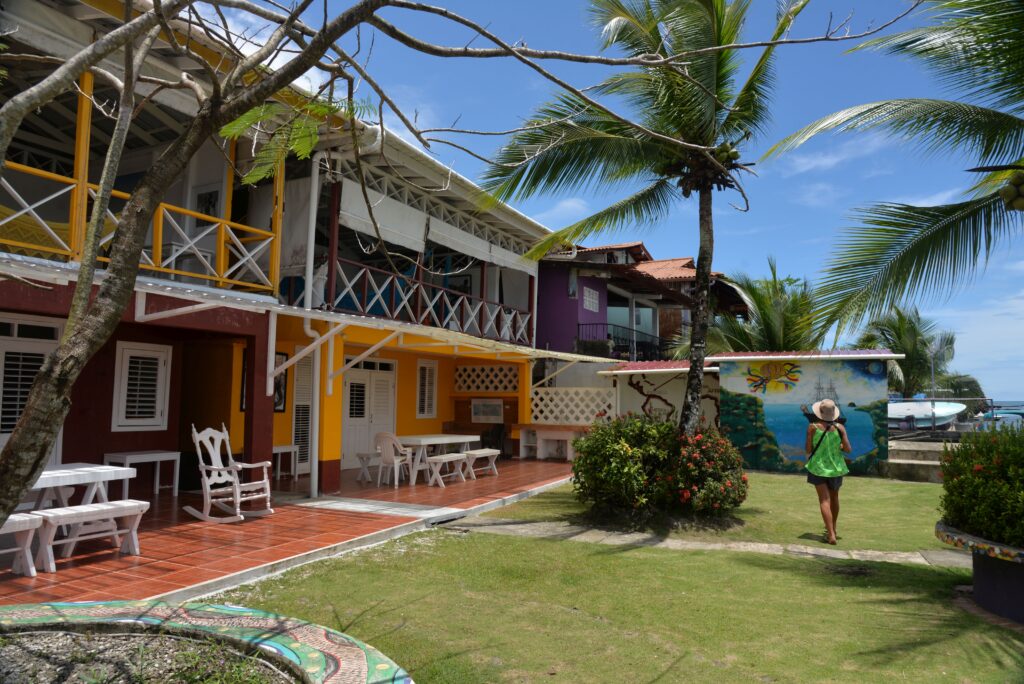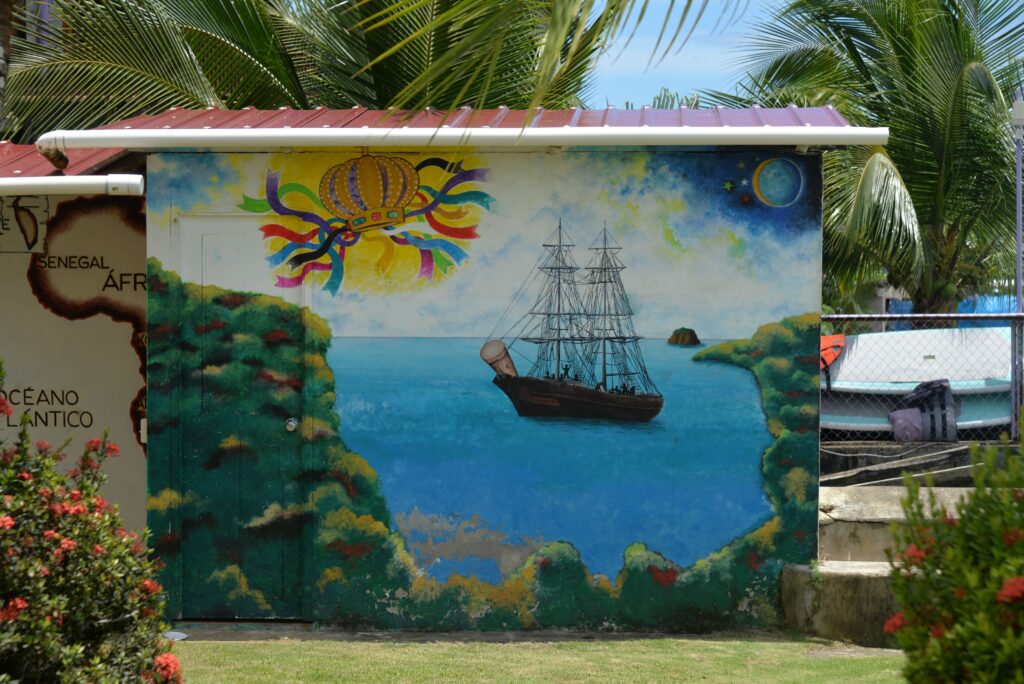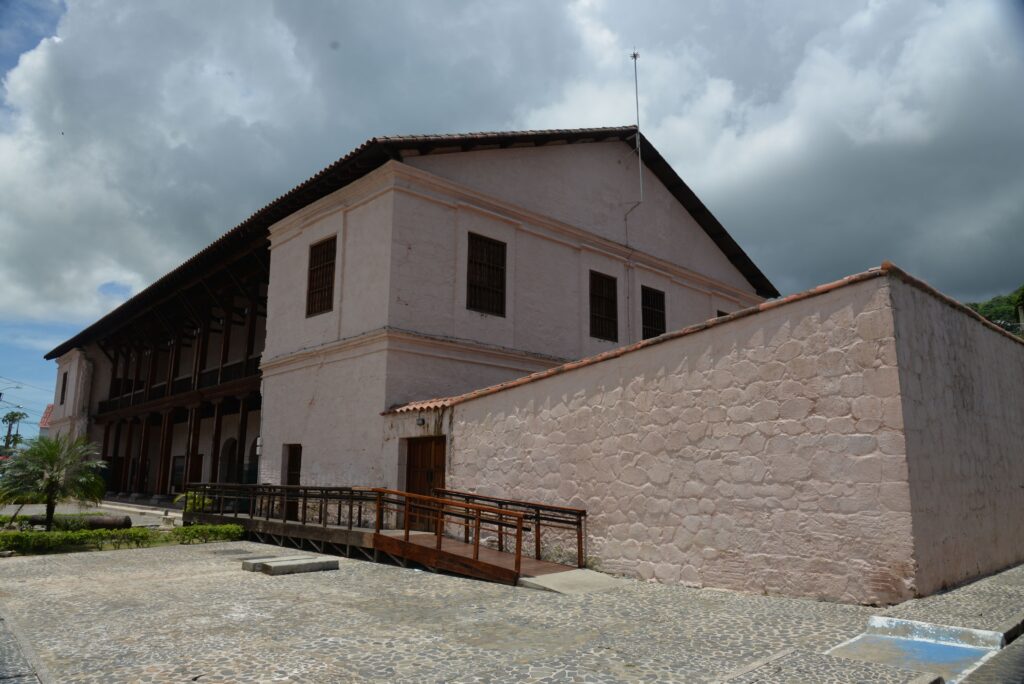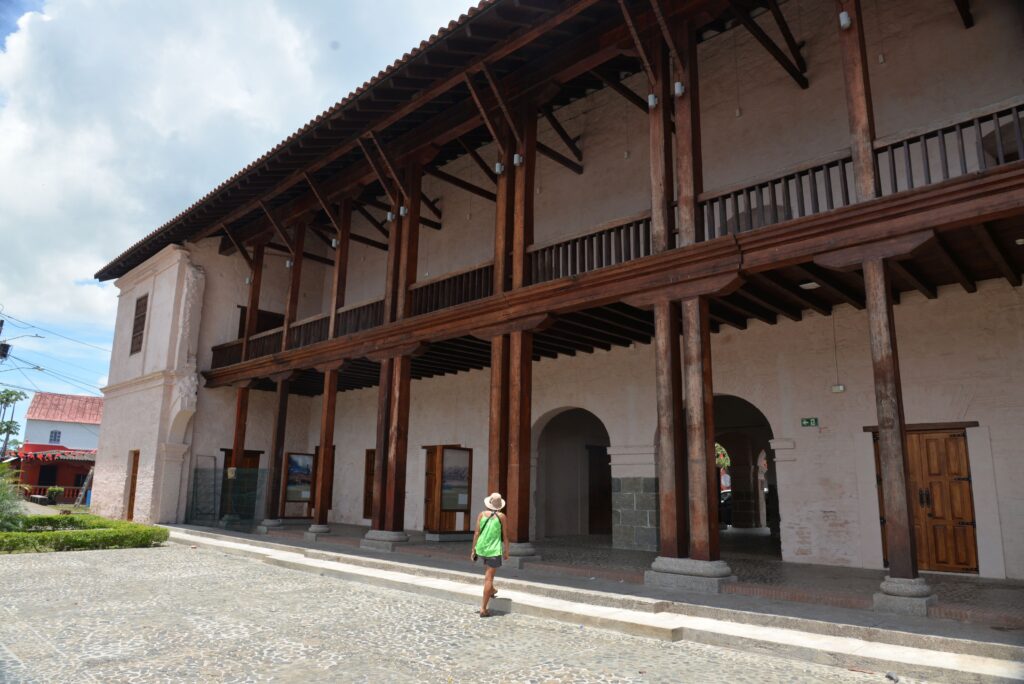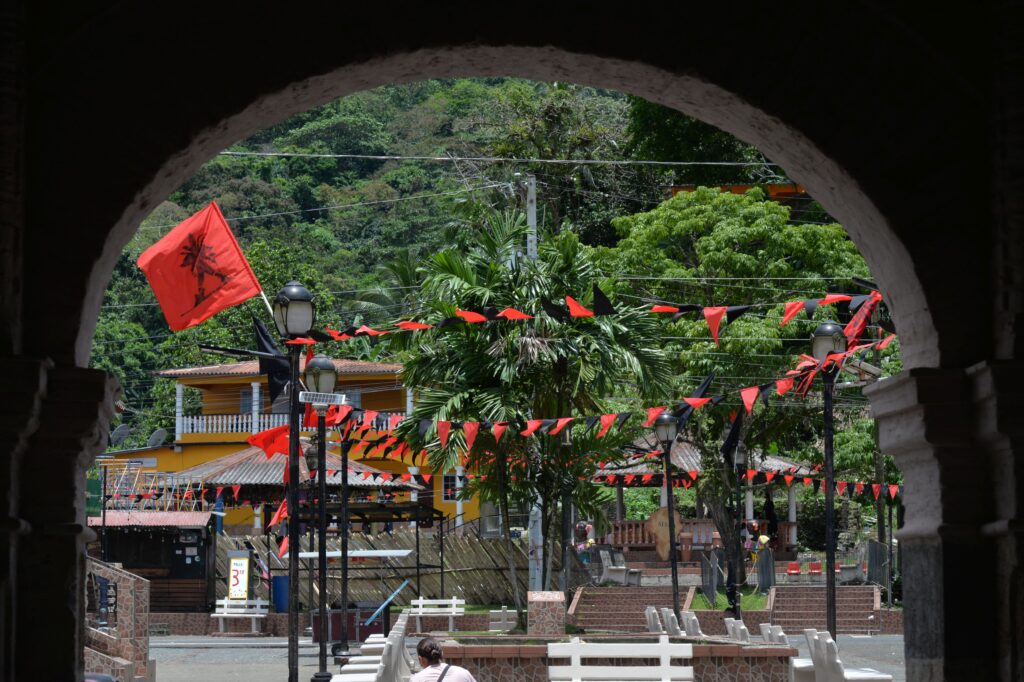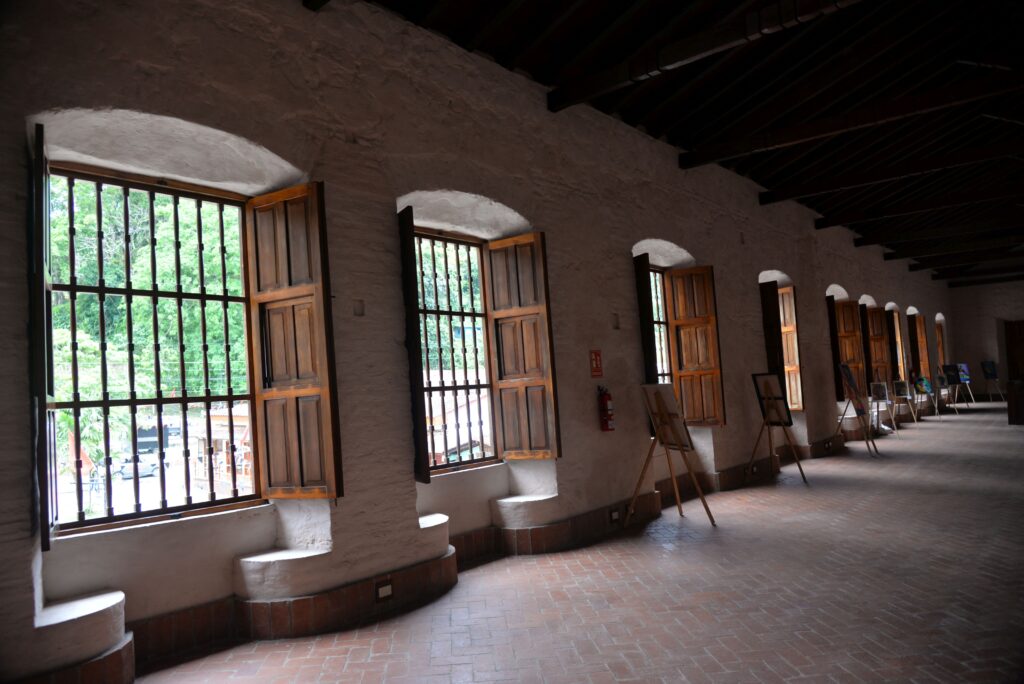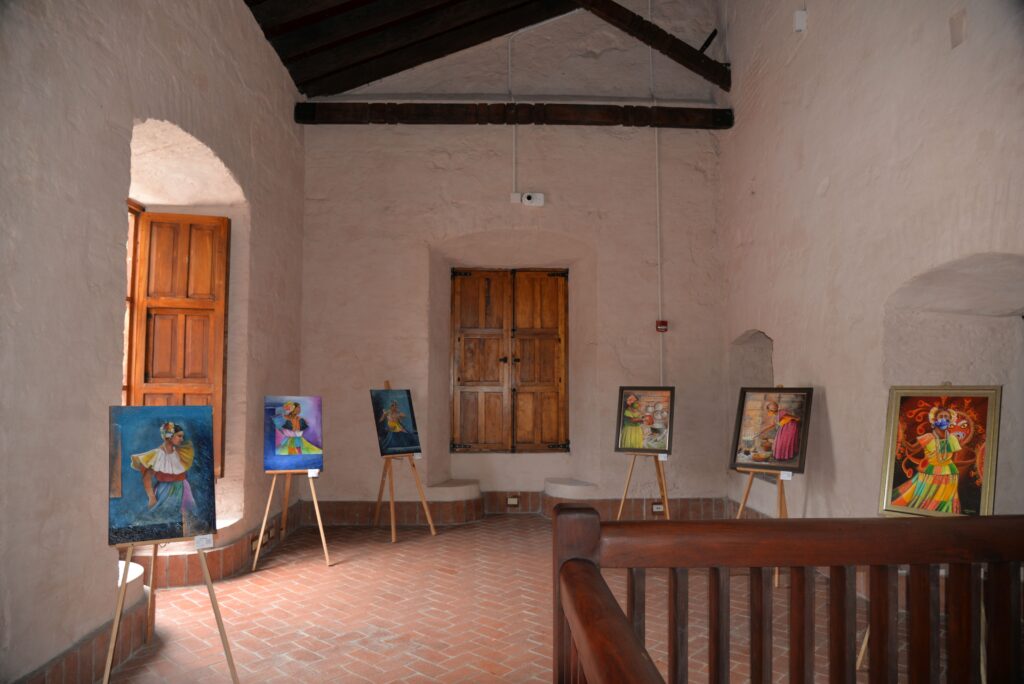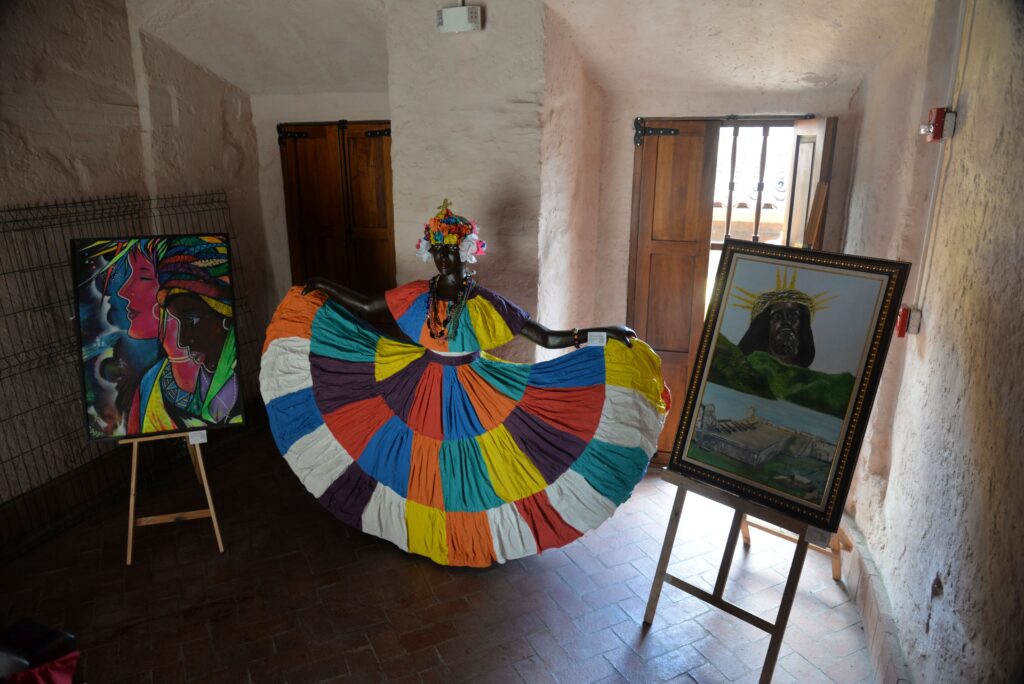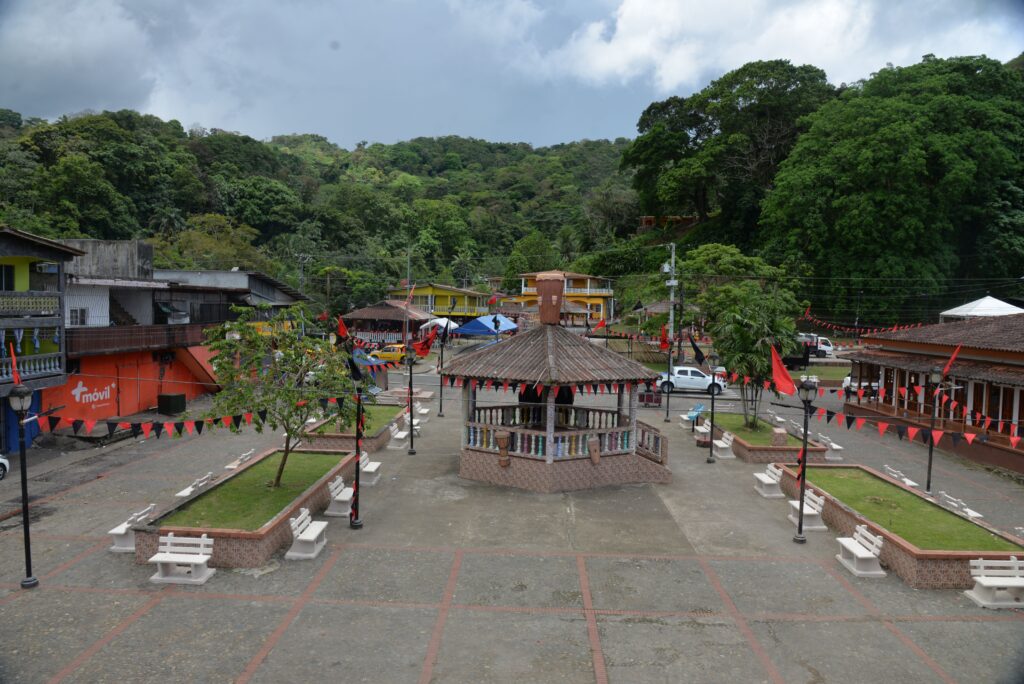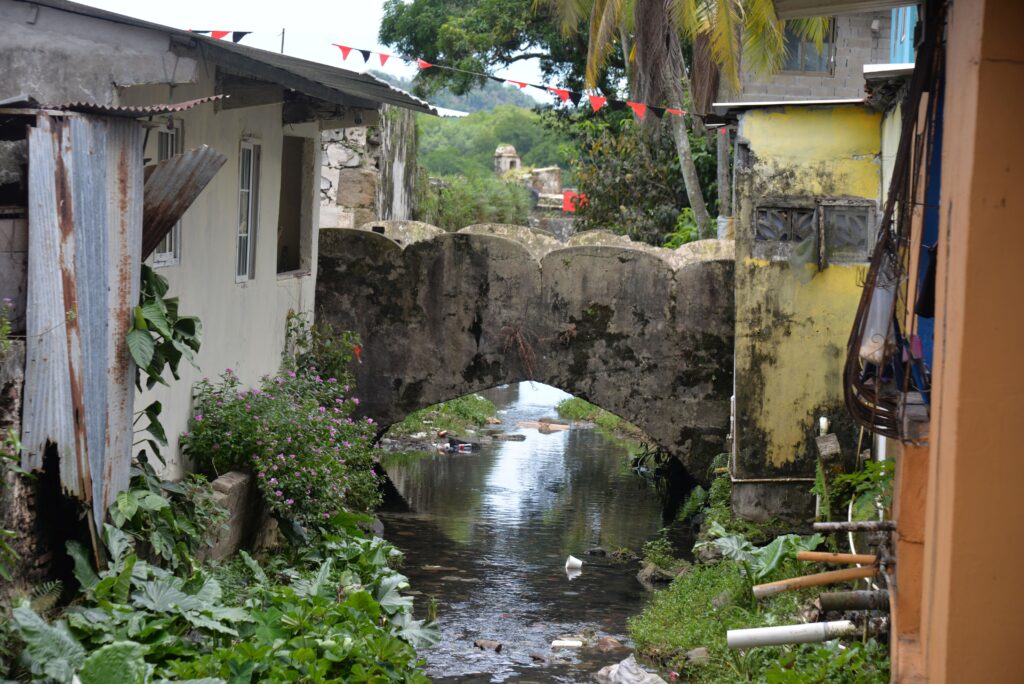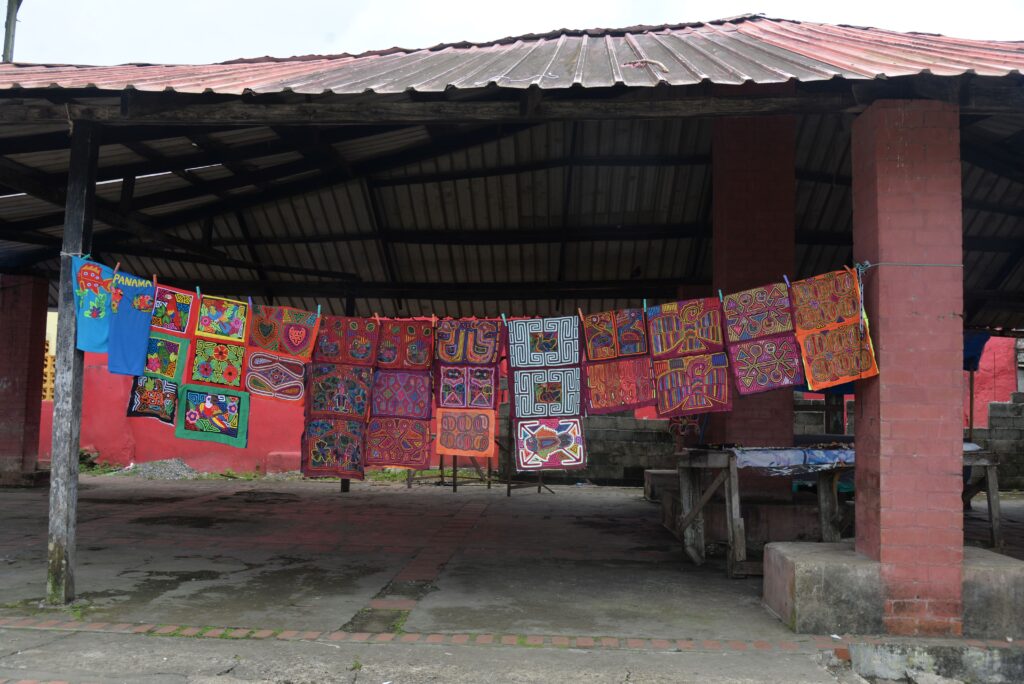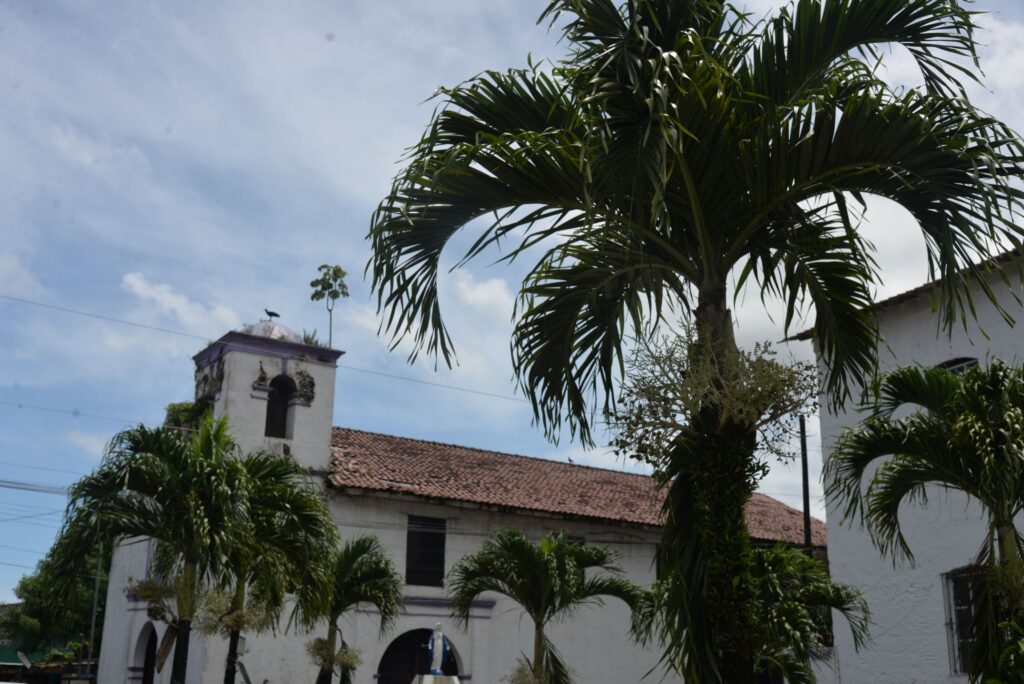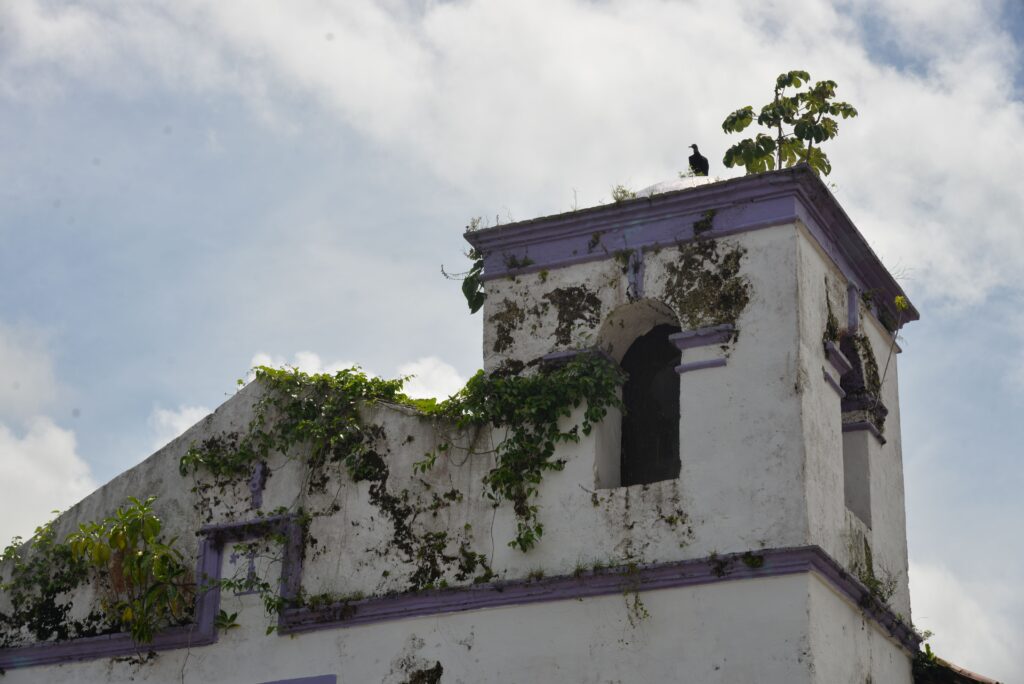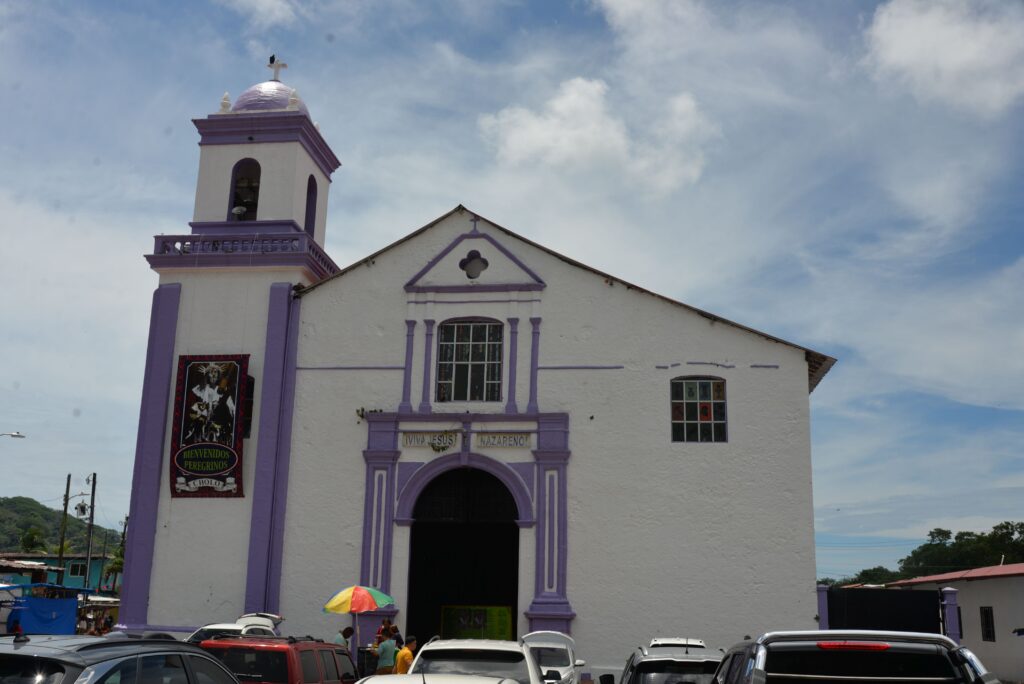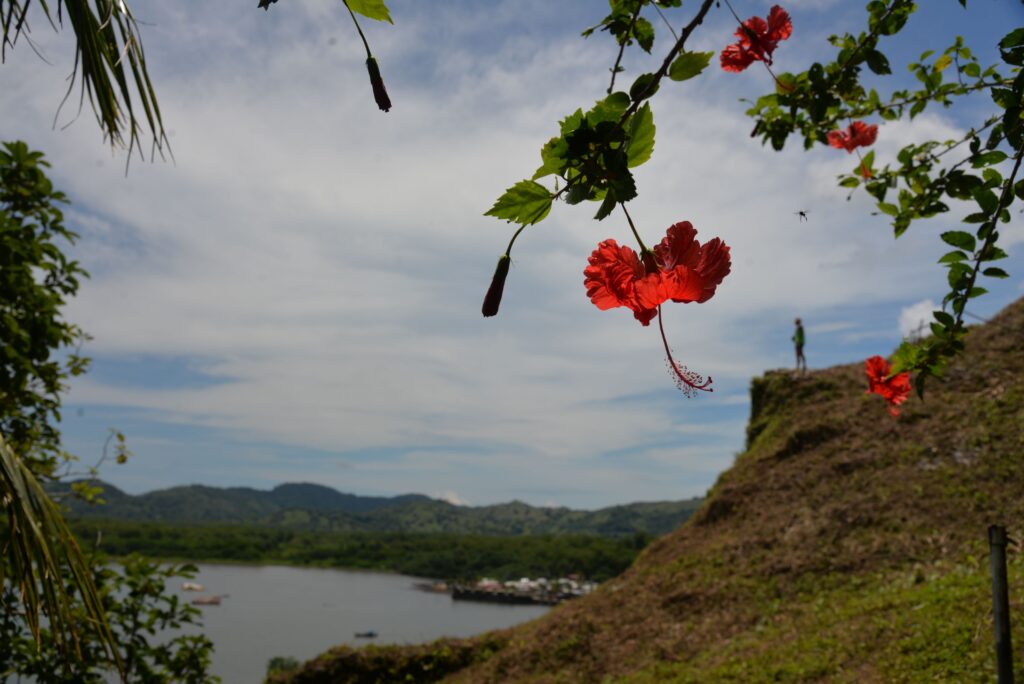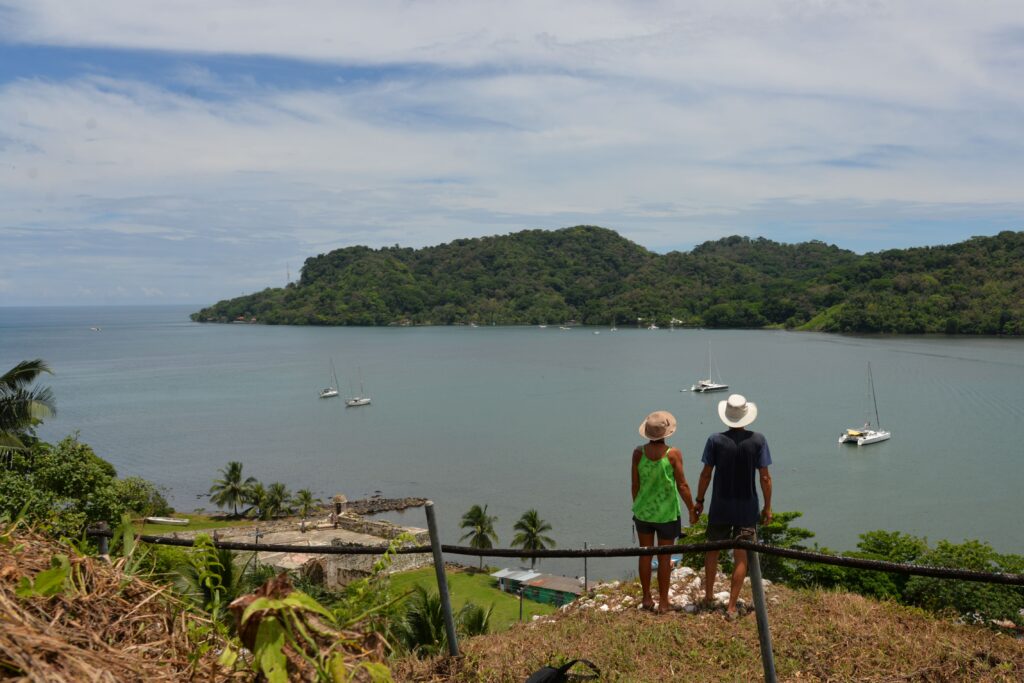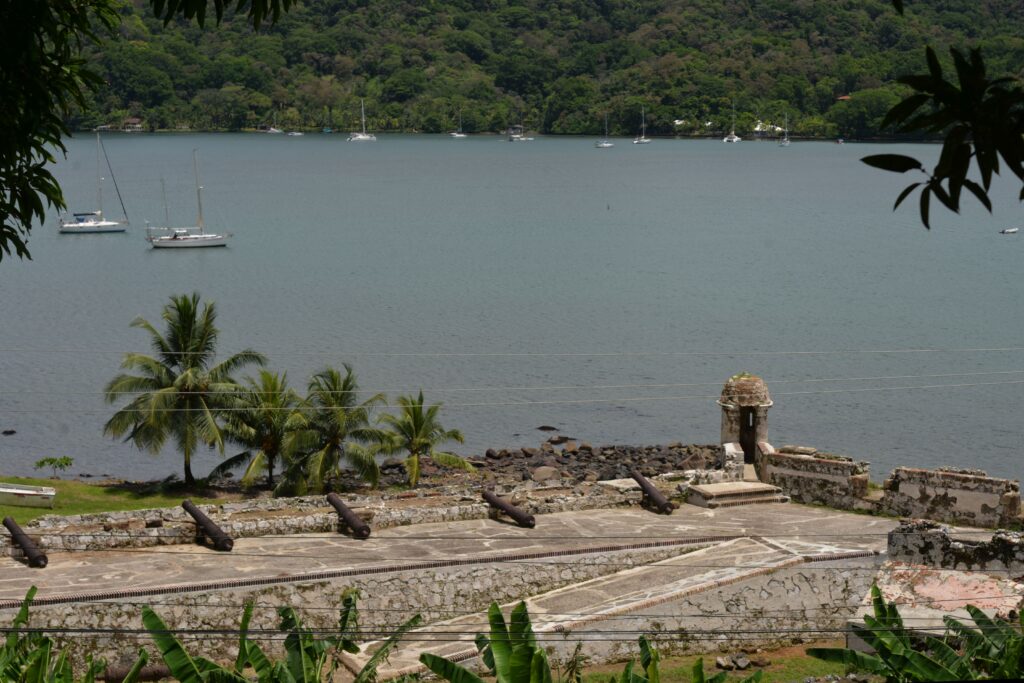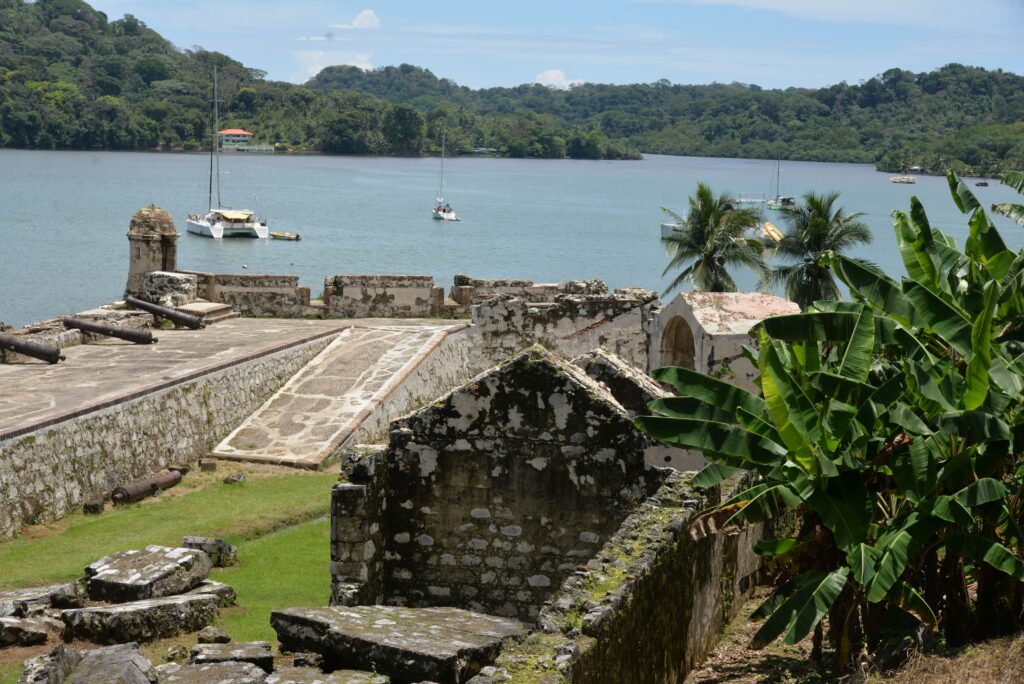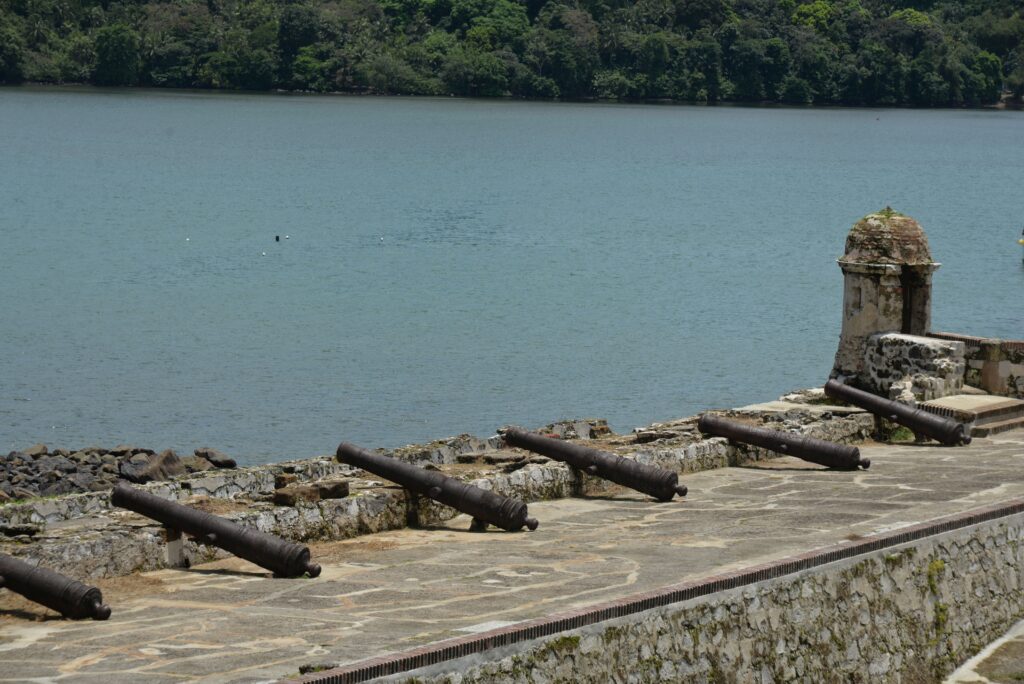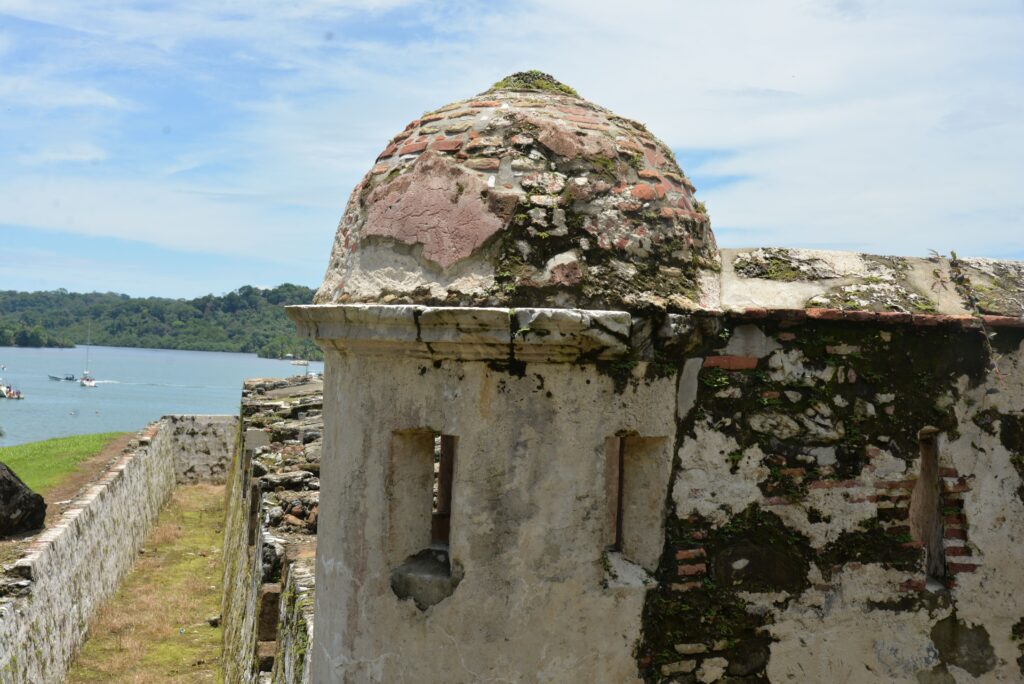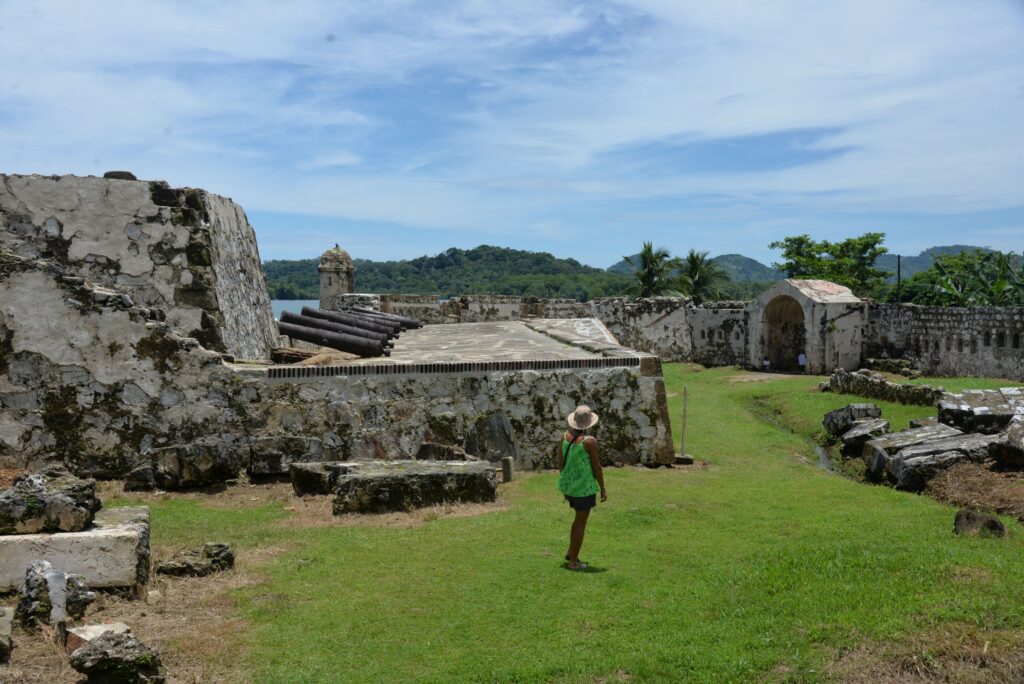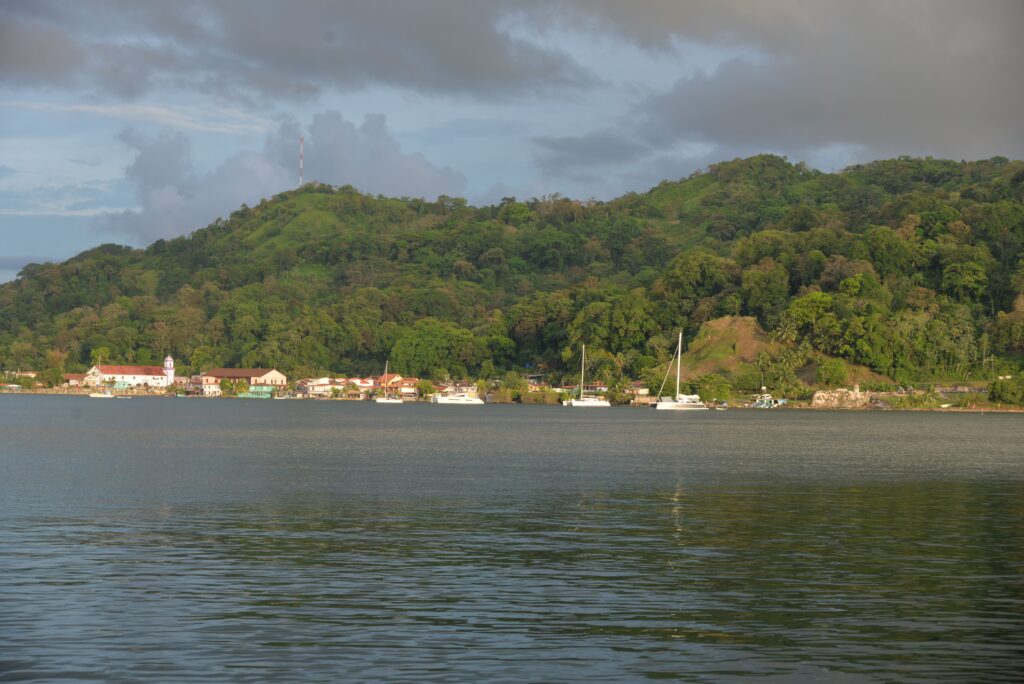Sometimes, the sea takes you where the soul needs to go. That’s what we told ourselves when SV Oceanolog dropped anchor in Portobelo, expecting little more than a sleepy Caribbean town and a few colonial forts. What we found instead was a riot of color, sound, and cultural fire—the Festival of Diablos and Congos, an explosion of Afro-Caribbean identity and theatrical rebellion we hadn’t planned on attending… but couldn’t tear ourselves away from.
It started with a drumbeat.
From the deck, we heard a faint, rhythmic thudding echo through the hills, like thunder with a pulse. Curious, we took the dinghy ashore, expecting perhaps a religious procession or school parade. What we found was the town transformed—no, possessed—by a pageant that blurred the line between street theatre and spiritual ritual.
Portobelo’s narrow lanes were teeming with Diablos—devils in horned masks, their faces grotesque with snarls, their bodies wrapped in red and black, wielding whips and unleashing high-pitched cackles. Around them danced the Congos, dressed in vibrant, patchwork clothes, their movements mocking and exaggerated, as they resisted, taunted, and ultimately overcame the devils with laughter, music, and satire.
We stumbled into the heart of the action, wide-eyed and slightly dazed, like accidental time travelers who’d arrived at a ritual centuries in the making. The Diablos y Congos Festival is no carnival—it’s a living, breathing performance of history. It dramatizes the struggle between African slaves and Spanish colonizers, with the Congos symbolizing the spirit of rebellion and resistance. The devils, naturally, are the oppressors.
Through it all, the drumming never stopped. It came from every street corner, a syncopated heartbeat that held the day together, keeping tempo with the wild choreography of rebellion. We visited the two forts on the hillside later that afternoon, sweating and smiling, our legs sore from dancing and our heads full of stories. Climbing to the highest point, we looked down on the town and the bay beyond, SV Oceanolog rocking gently in the harbor like she, too, was tapping her keel in time with the drums.
That night, we sat on deck as the sun set behind the jungle-draped hills, still hearing echoes of laughter, drums, and songs, followed by spectacular fireworks. We hadn’t planned to witness one of Panama’s most important cultural festivals, which happens once every two years. We didn’t even know it was happening.
But the best parts of a voyage are rarely on the itinerary.
And this—this wild, whirling day of devils, resistance, music, and dance—was unforgettable.


